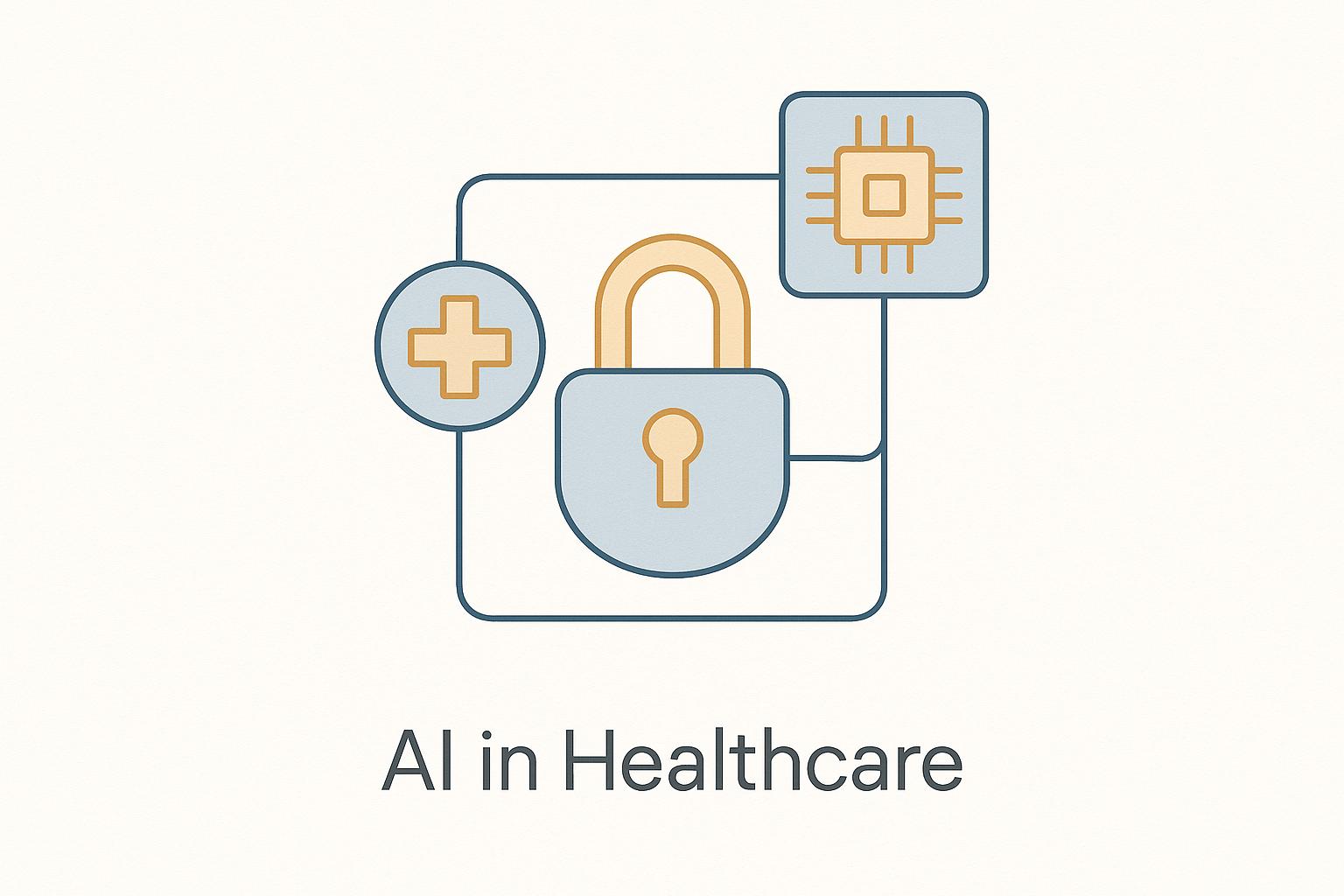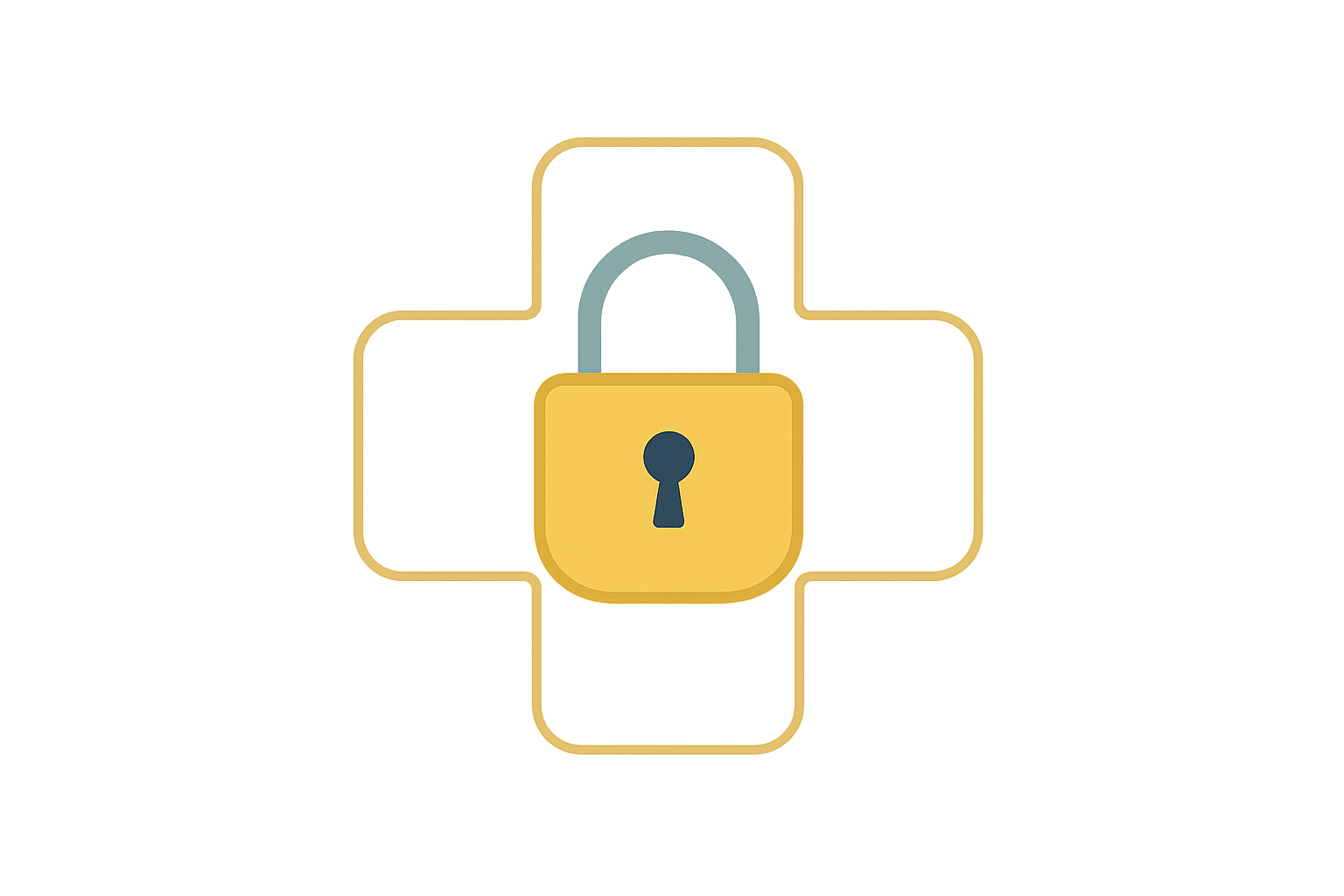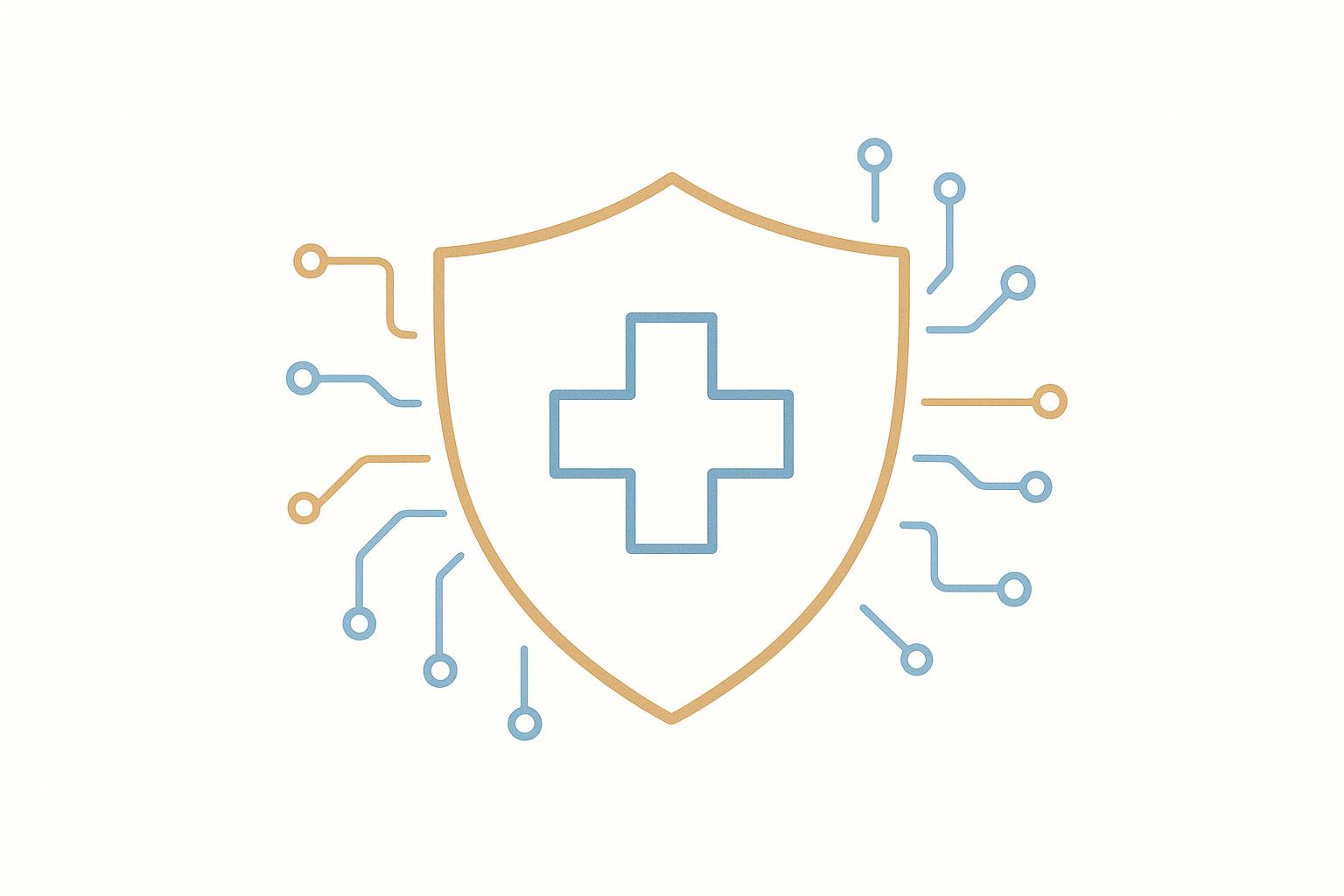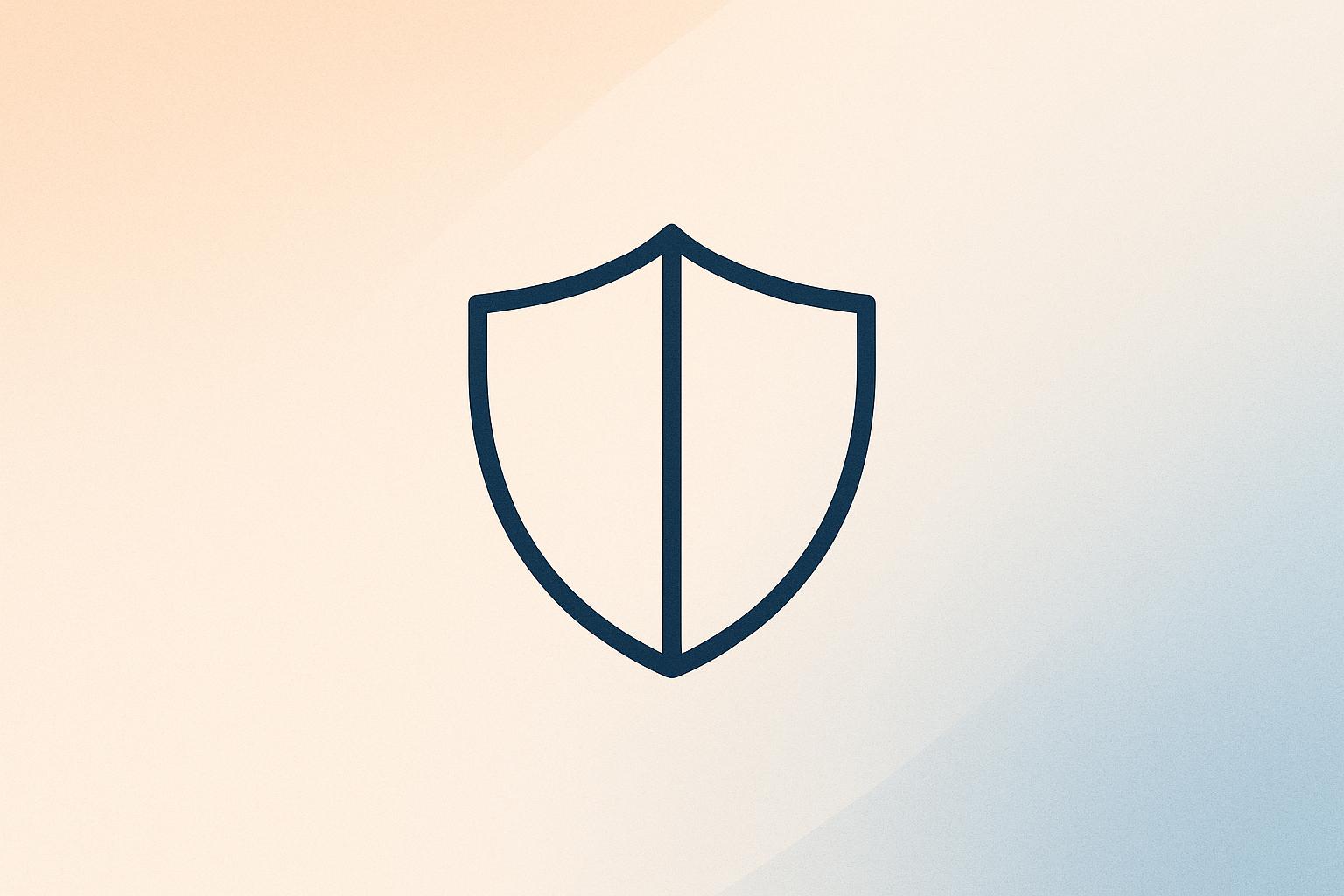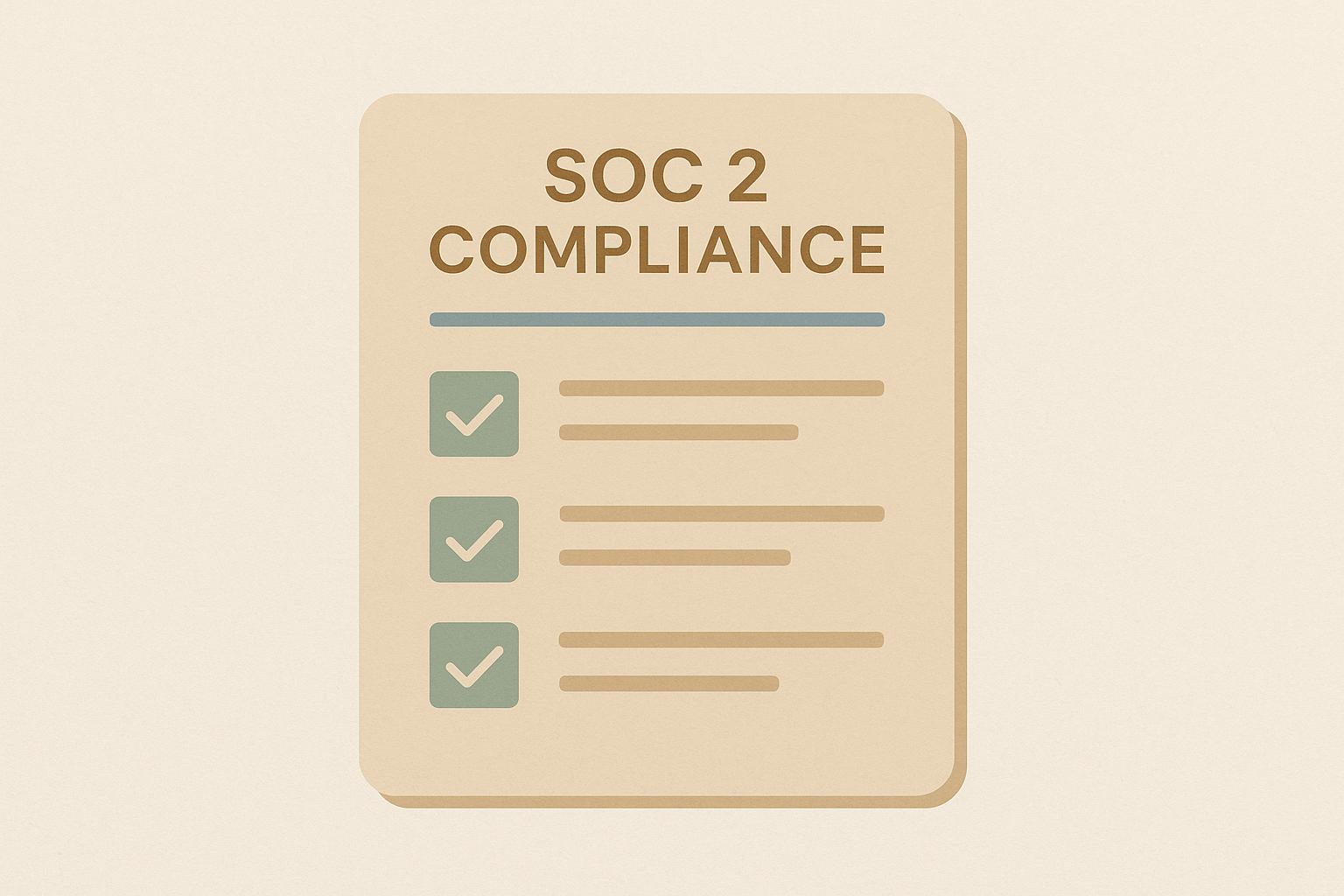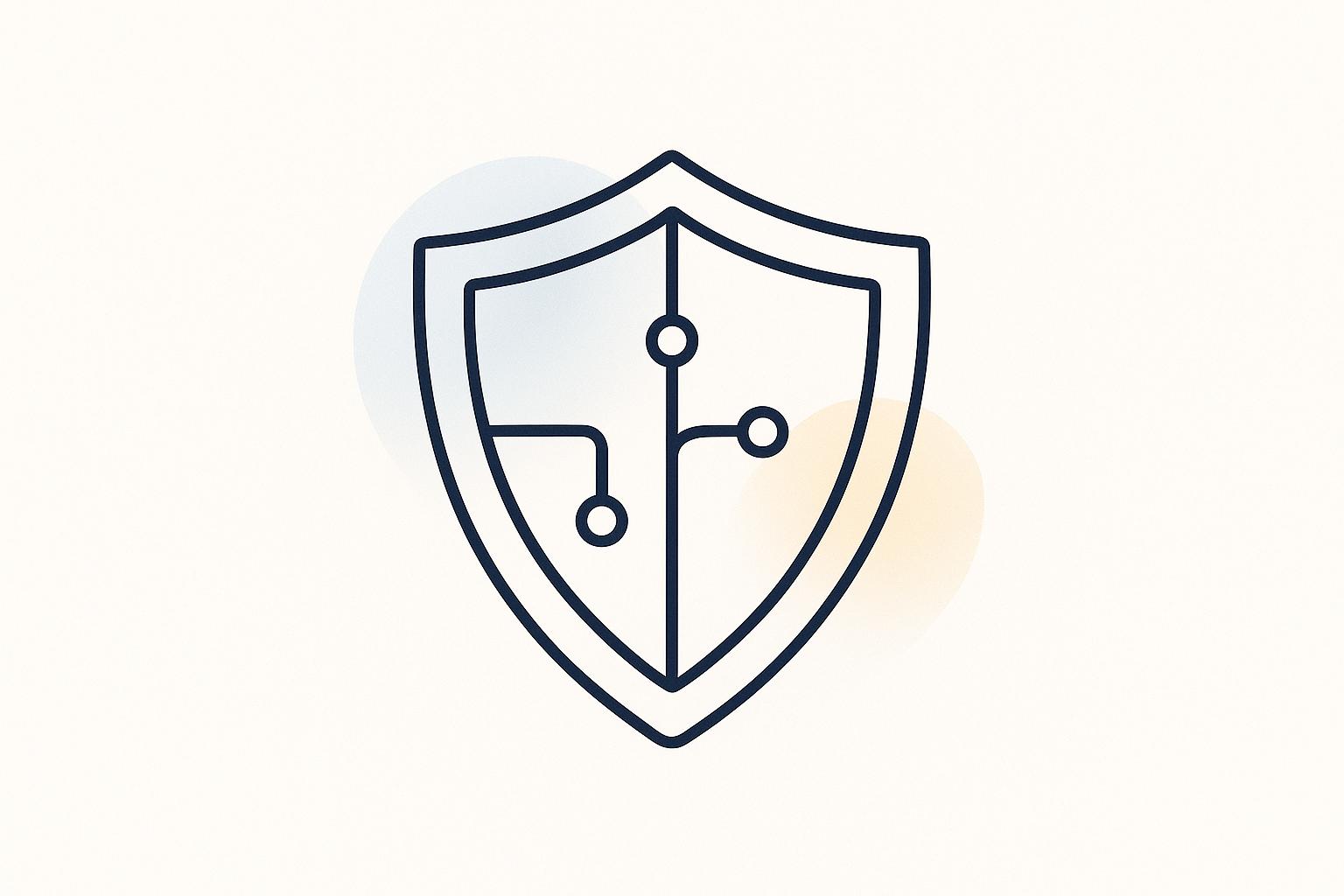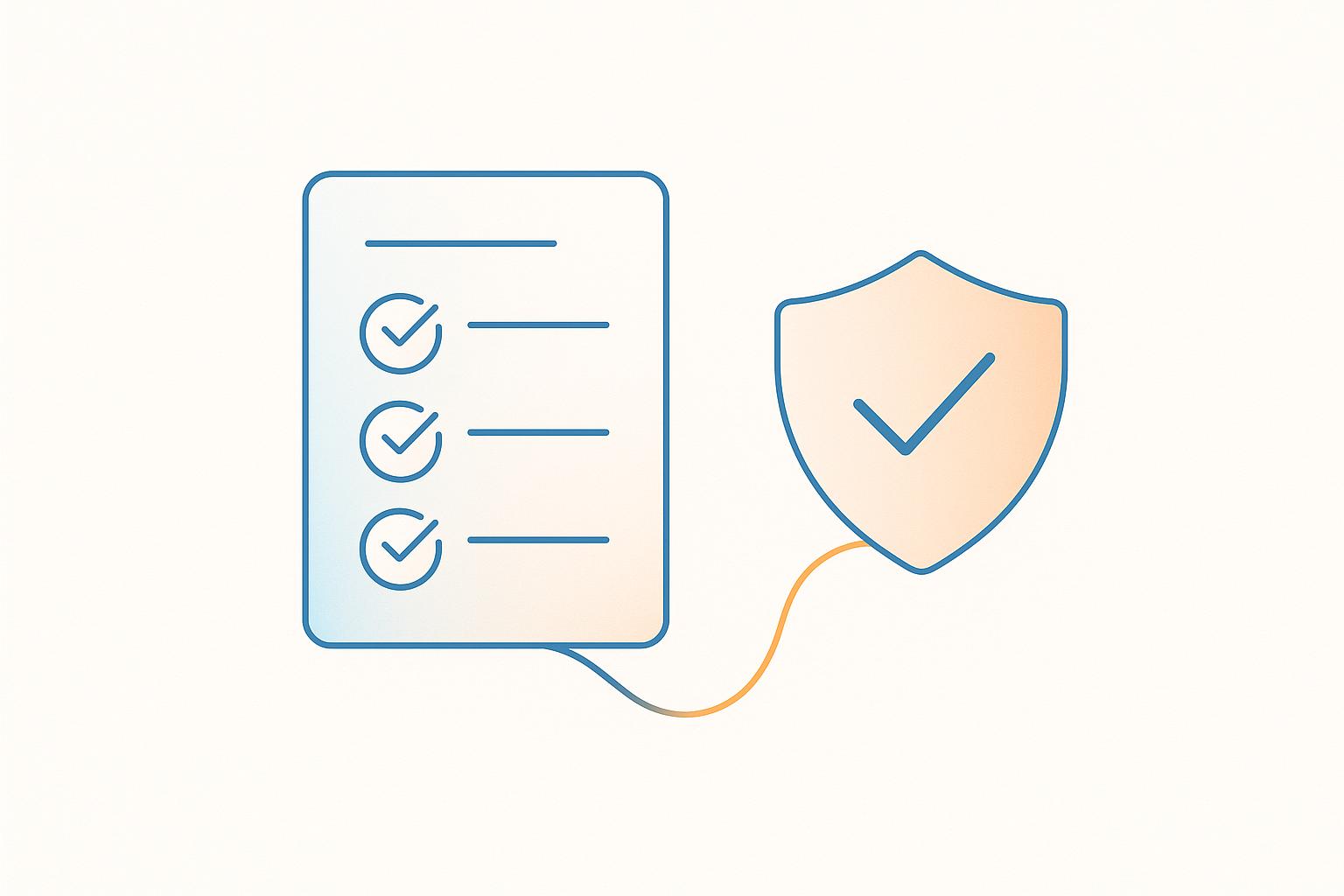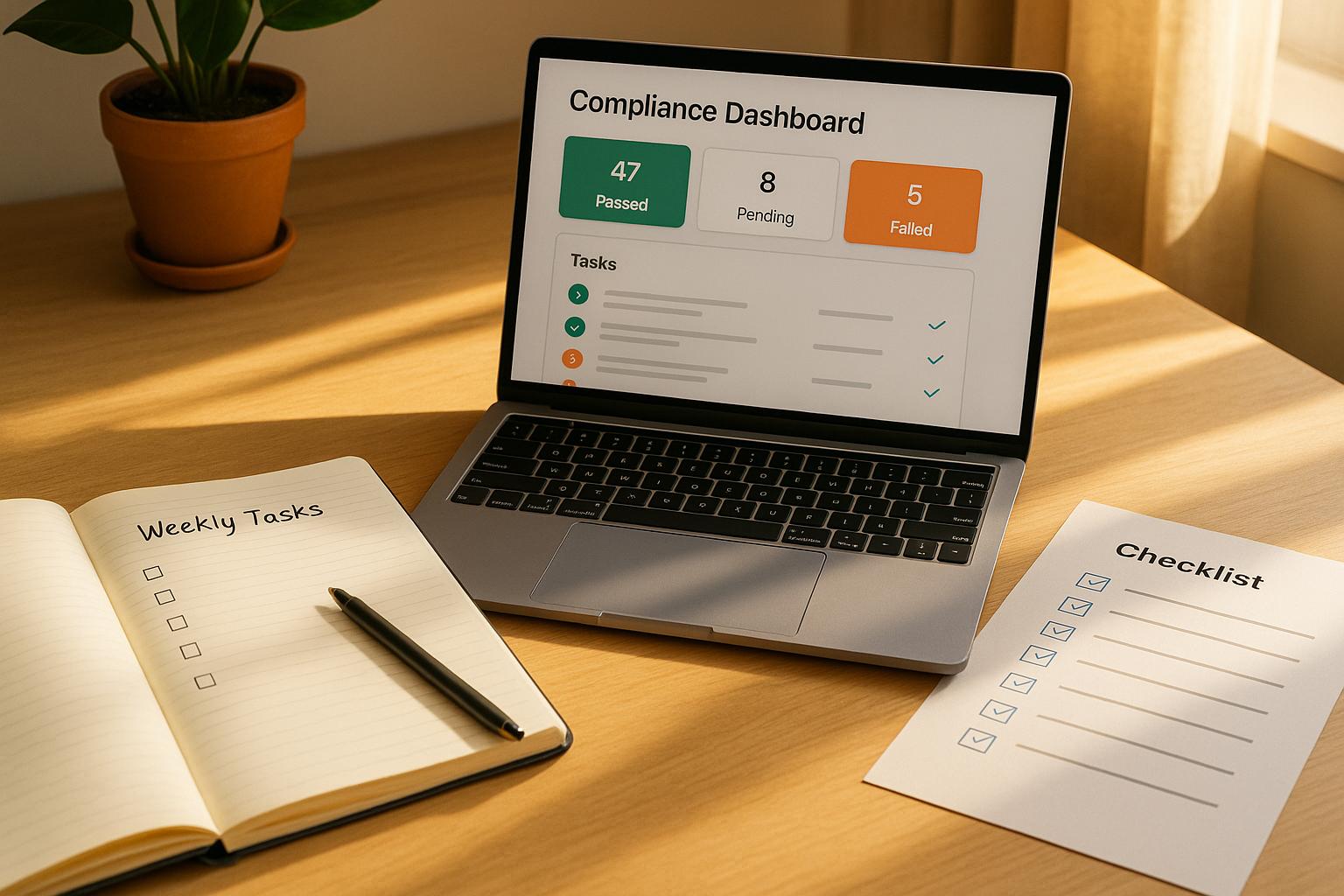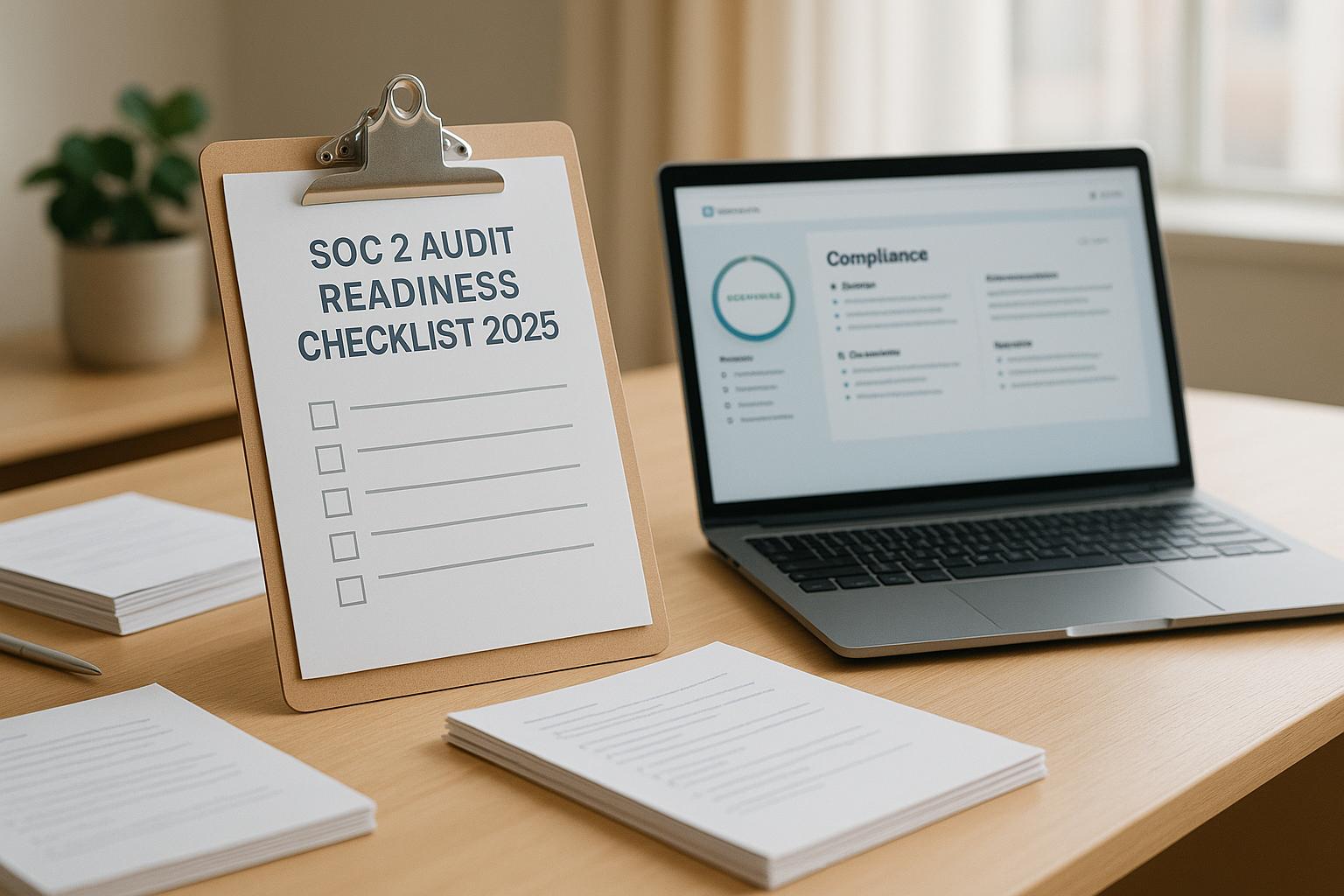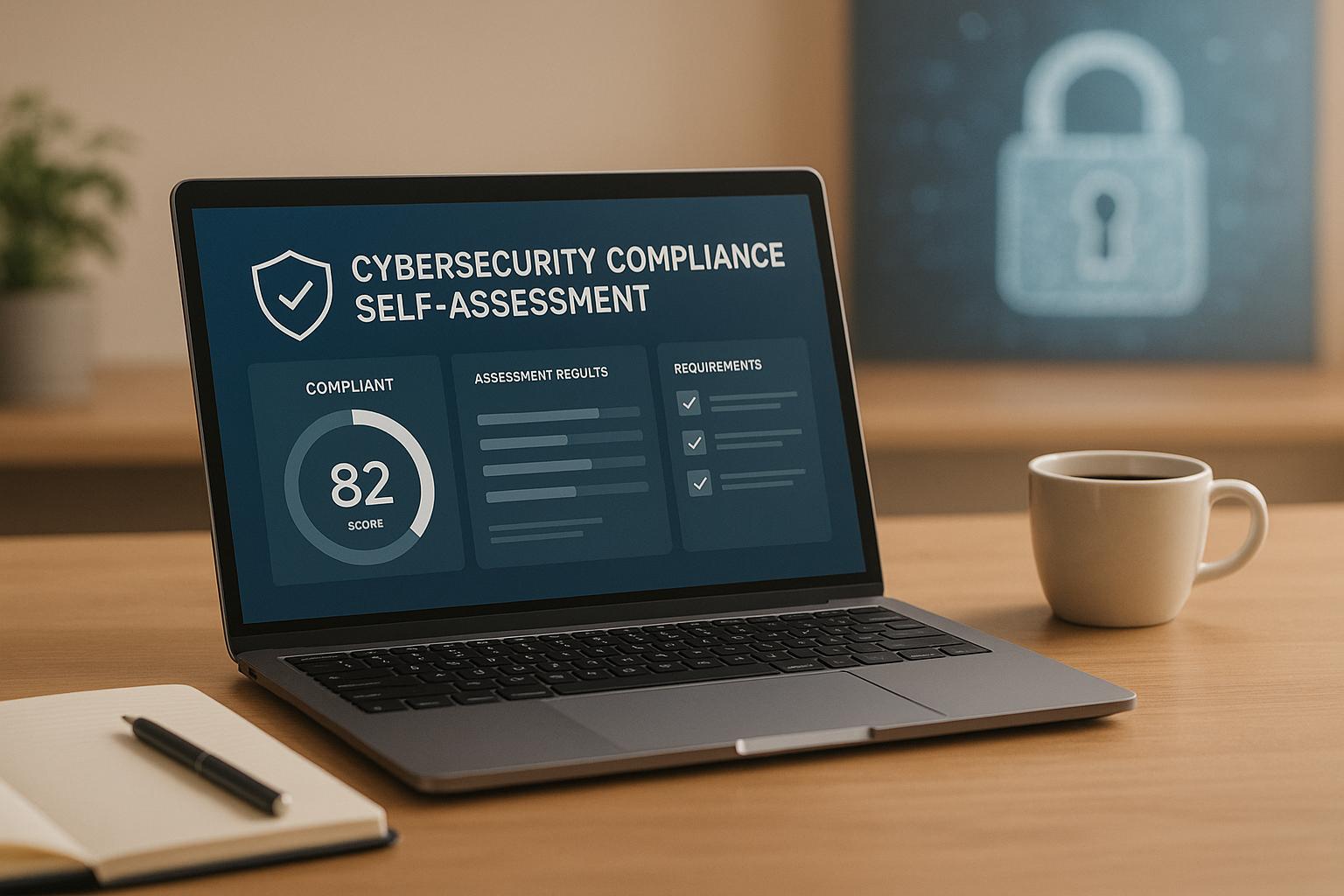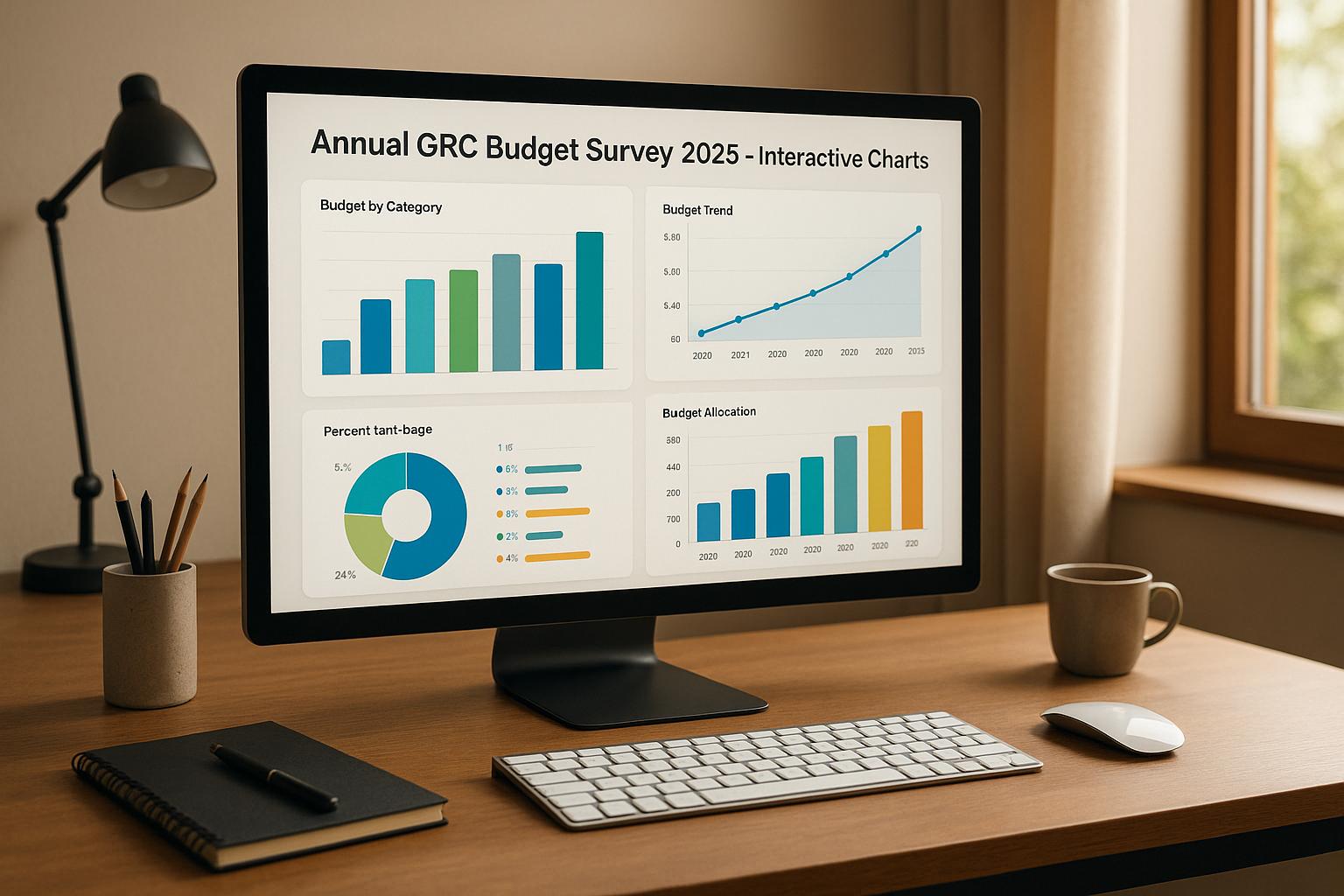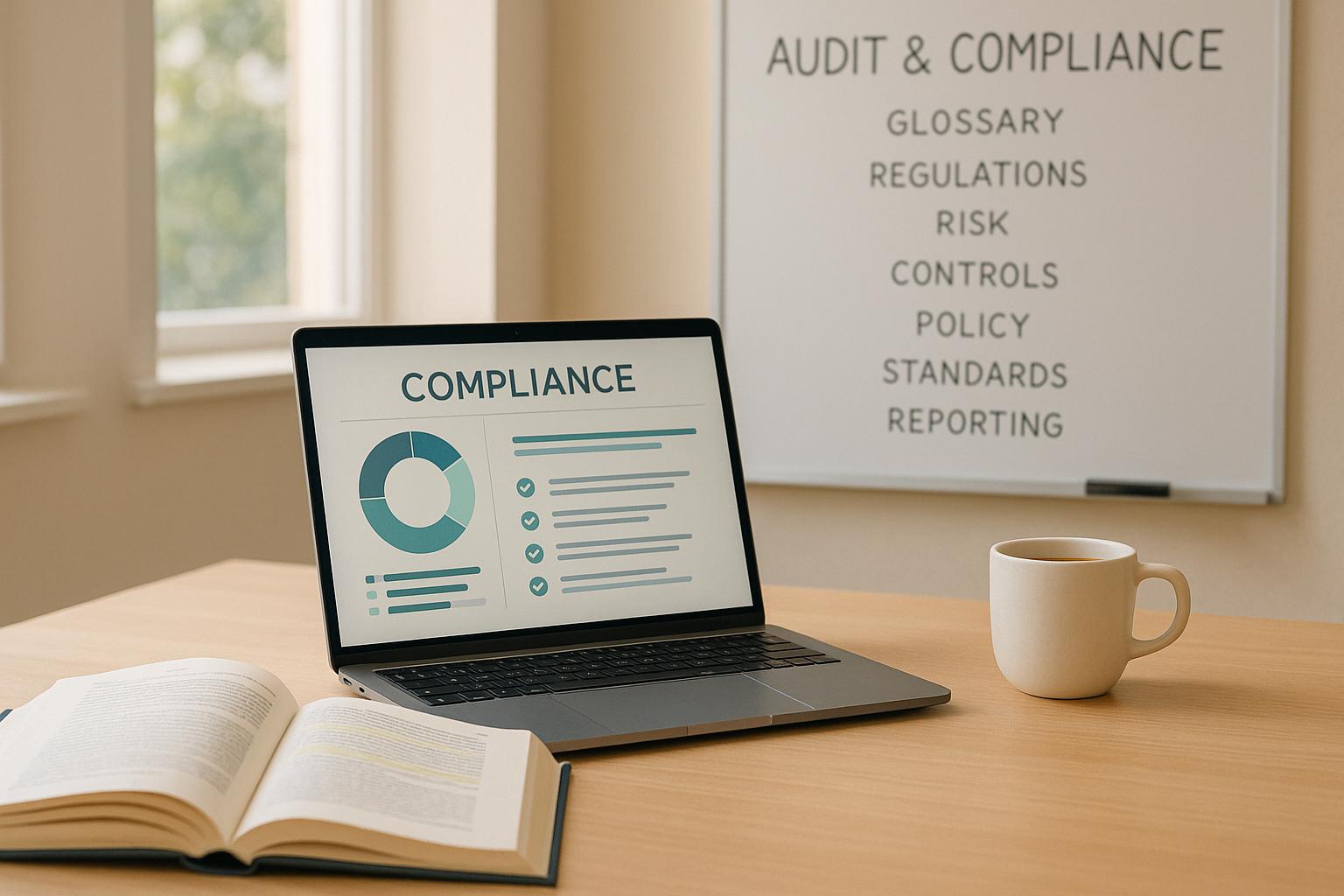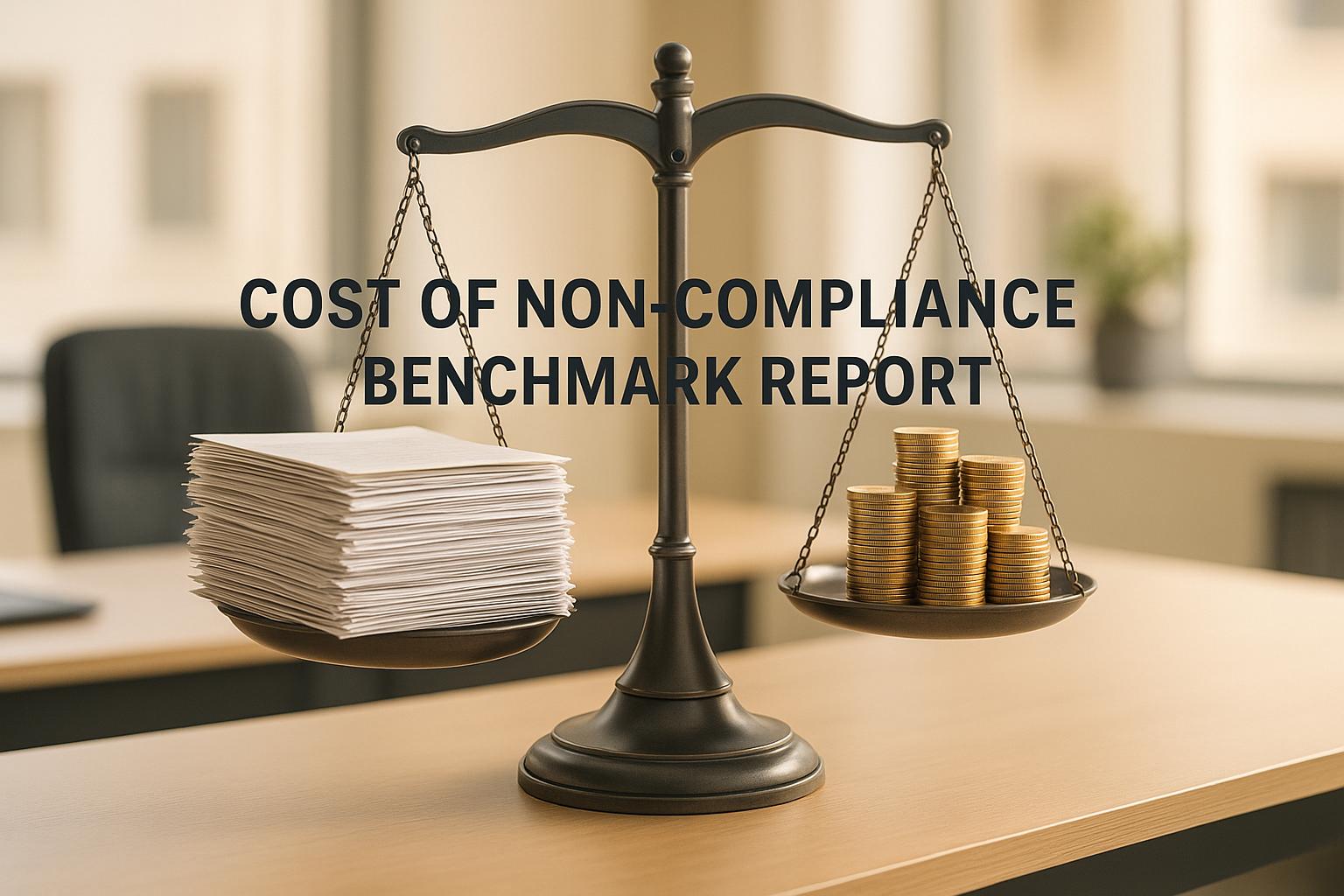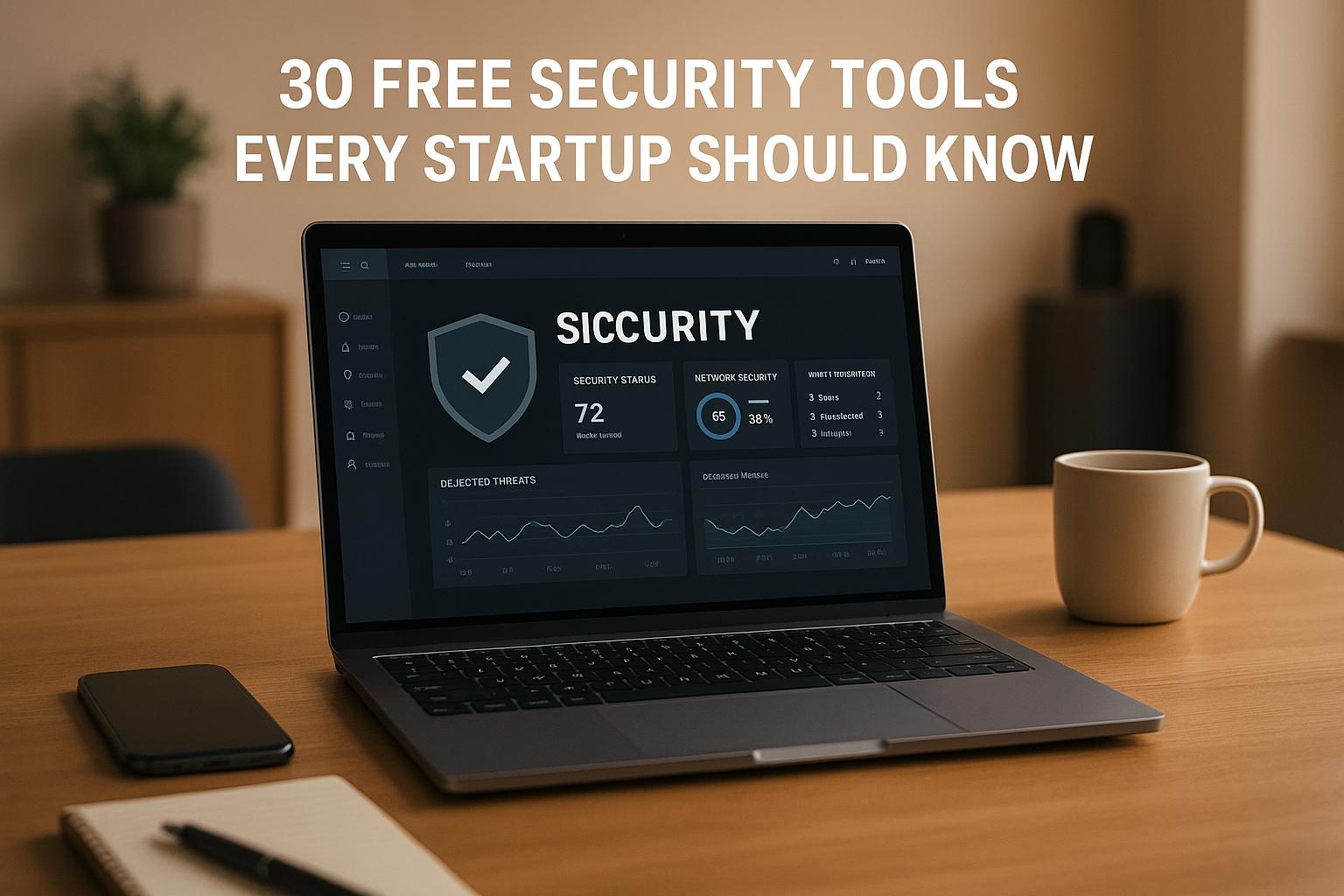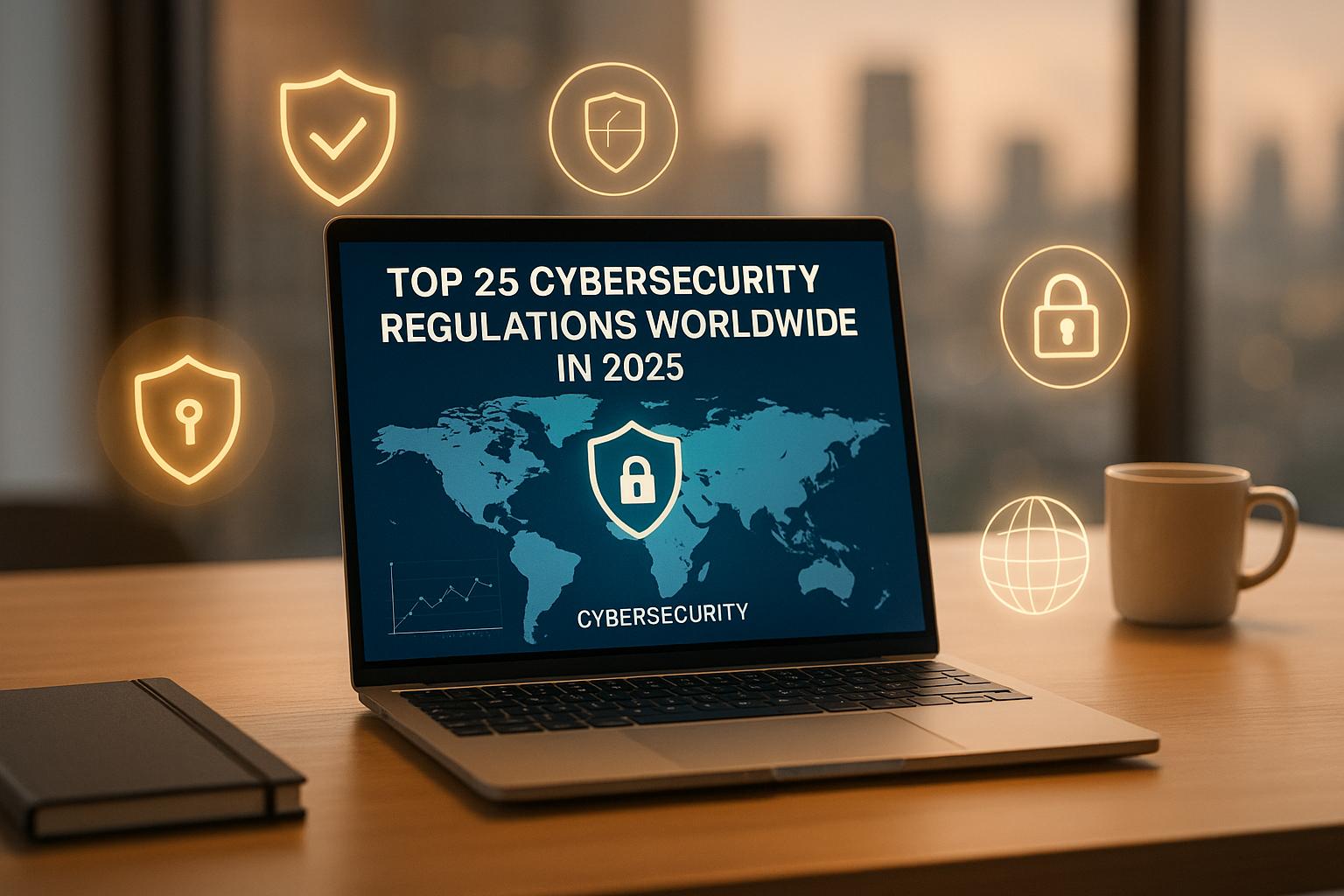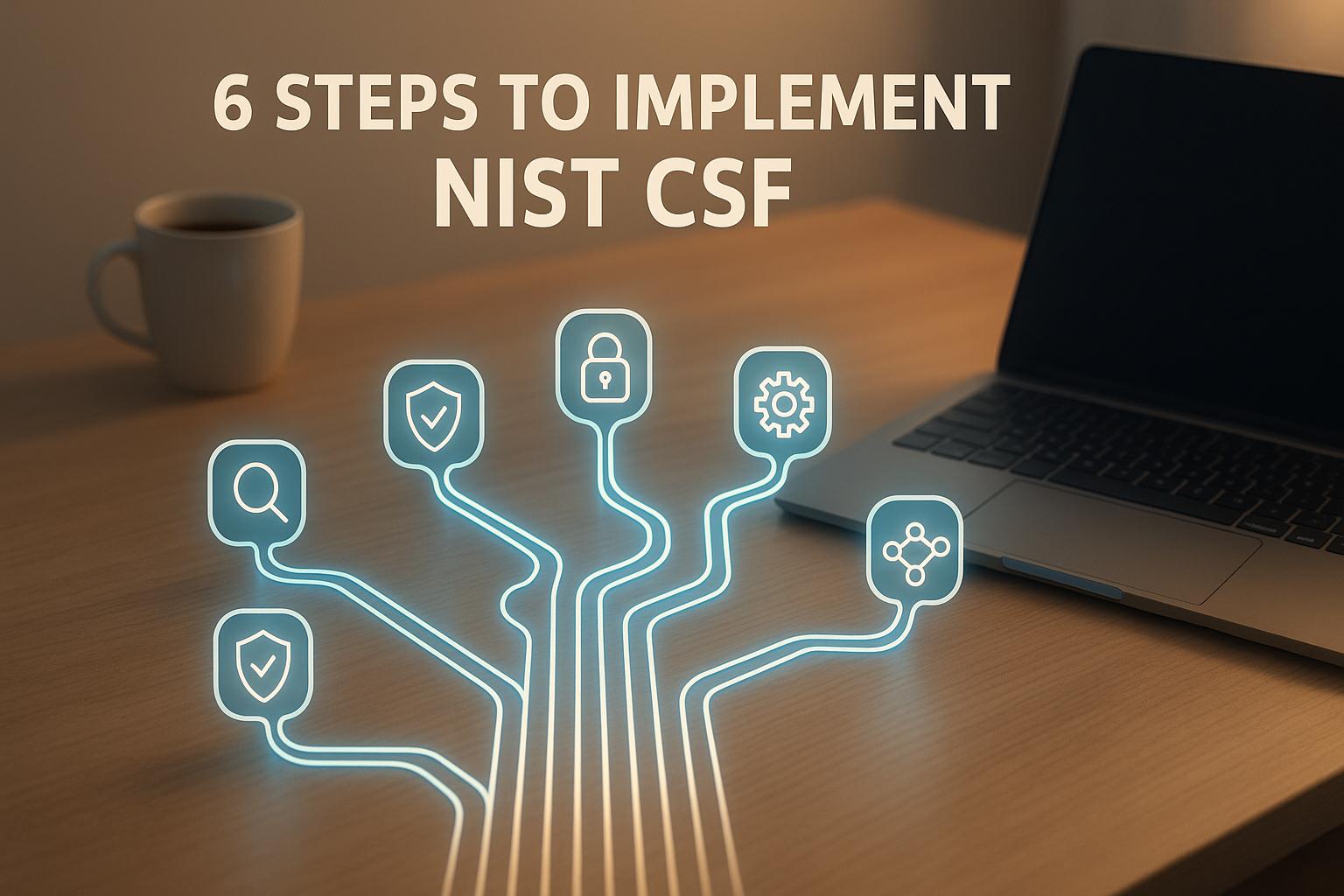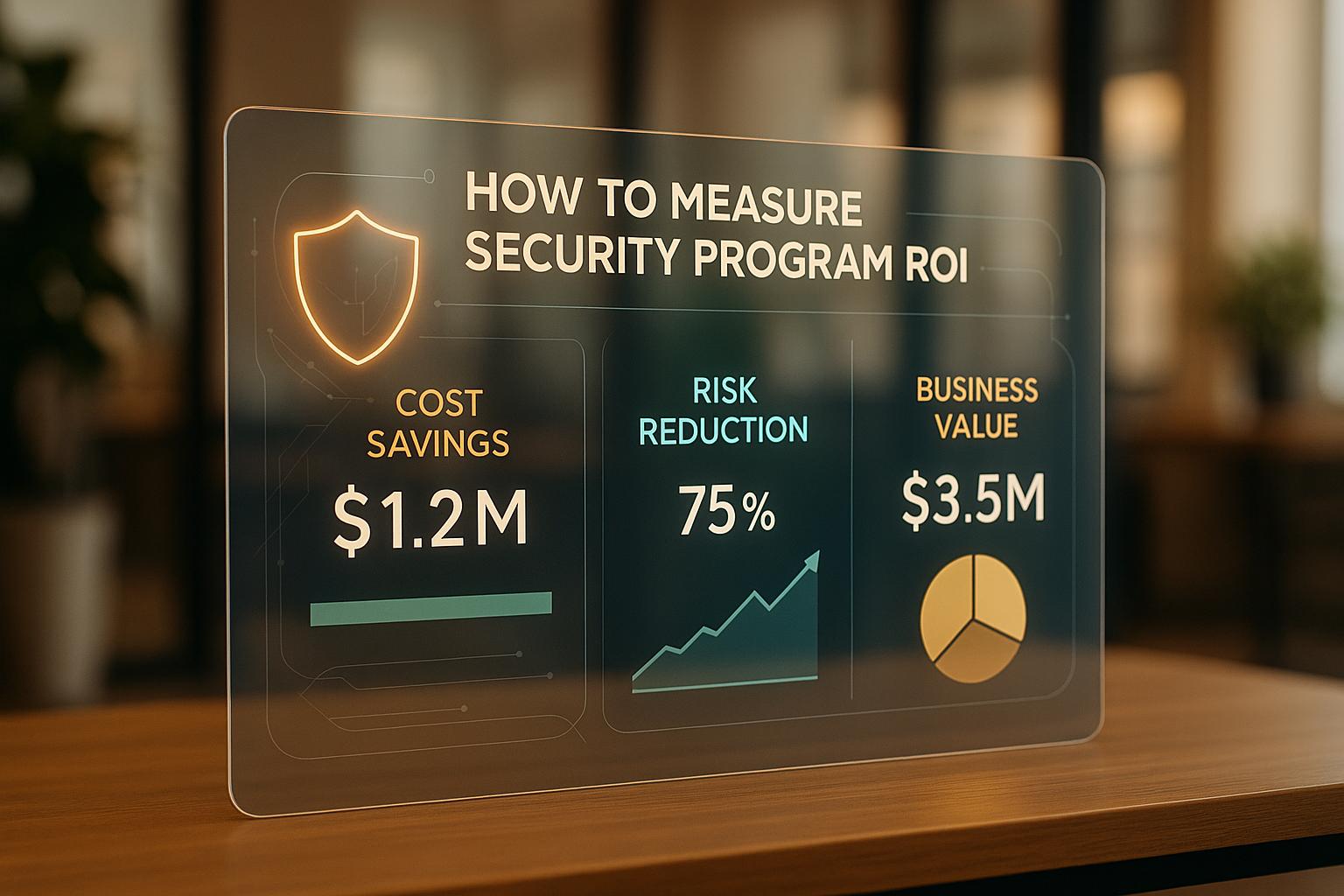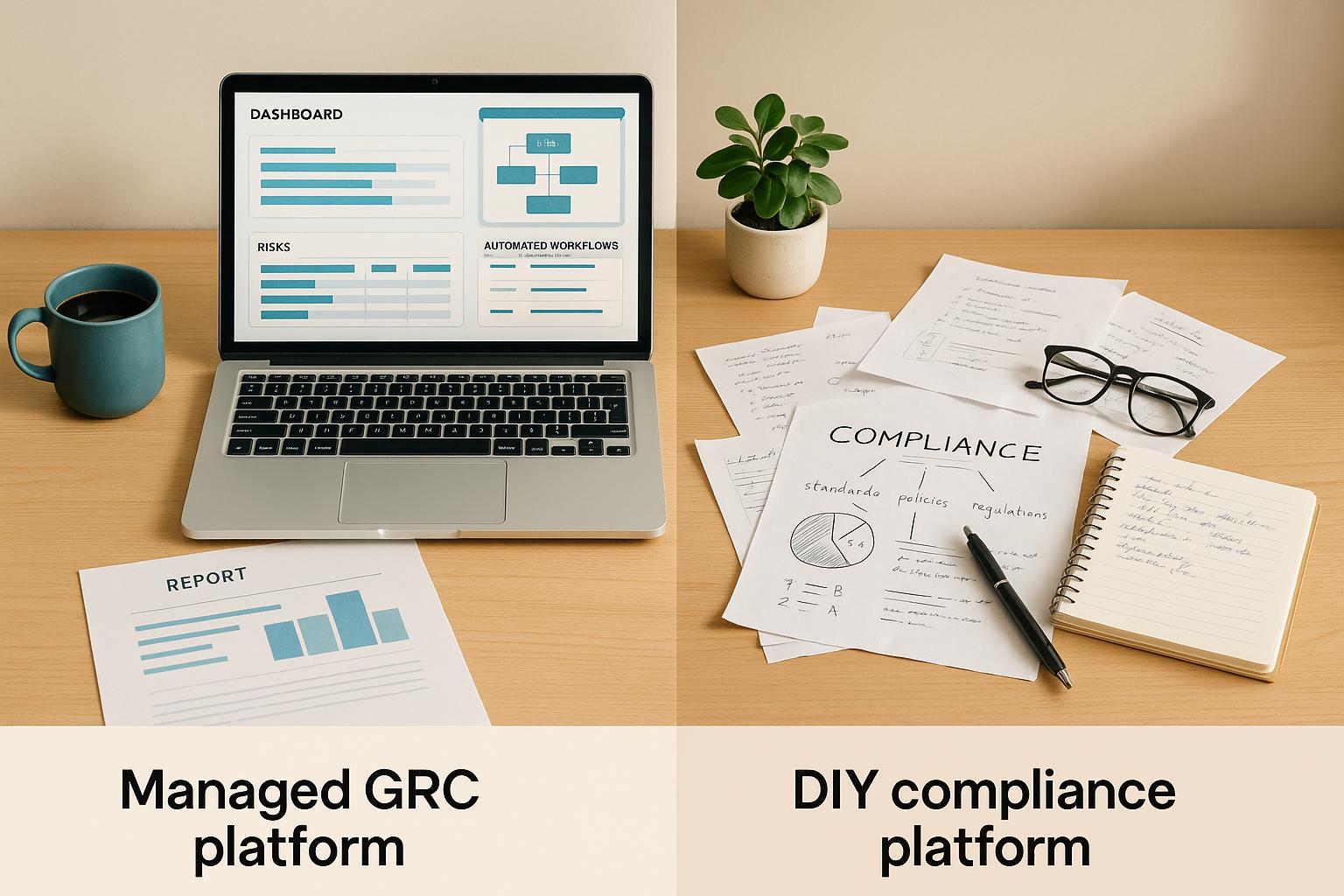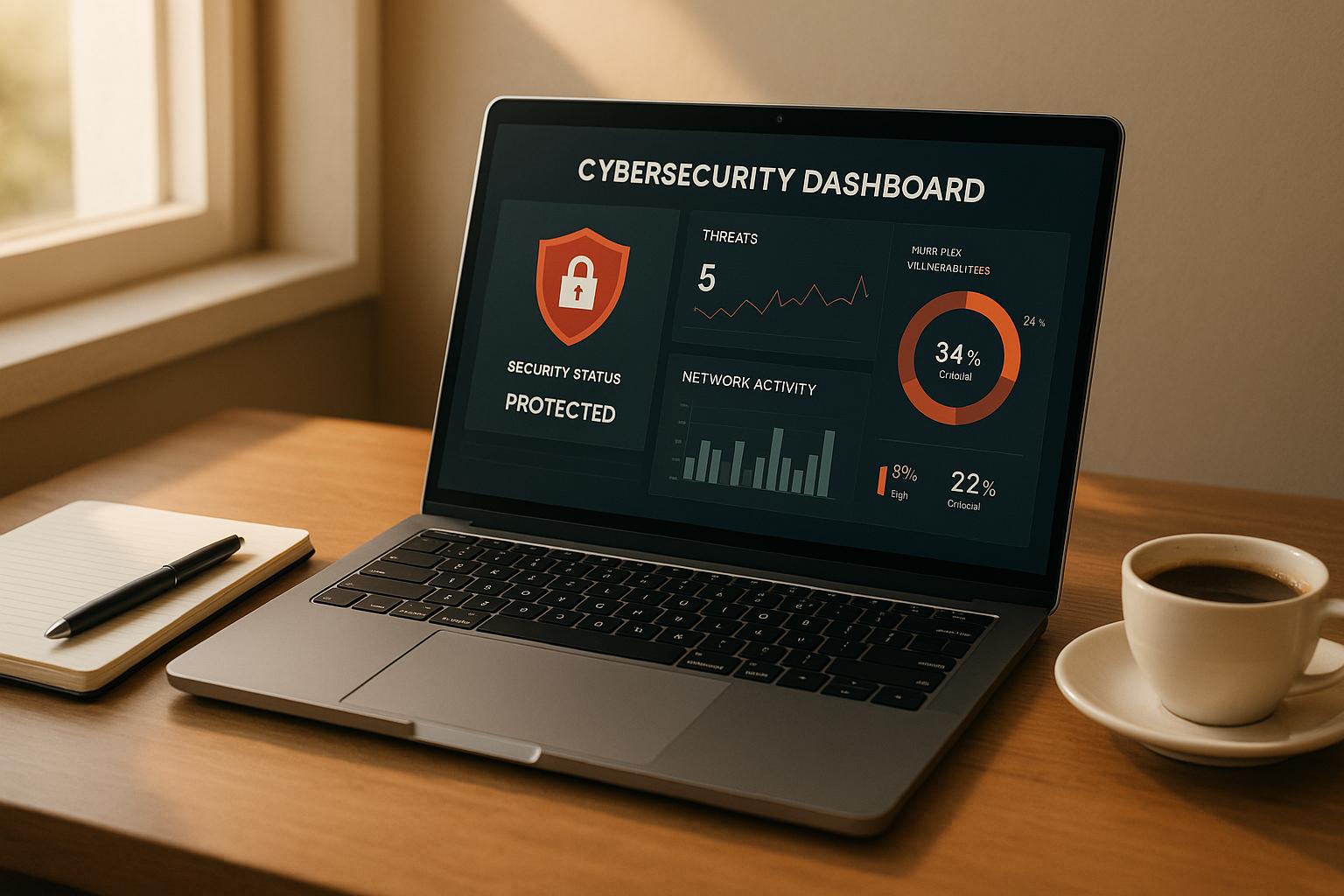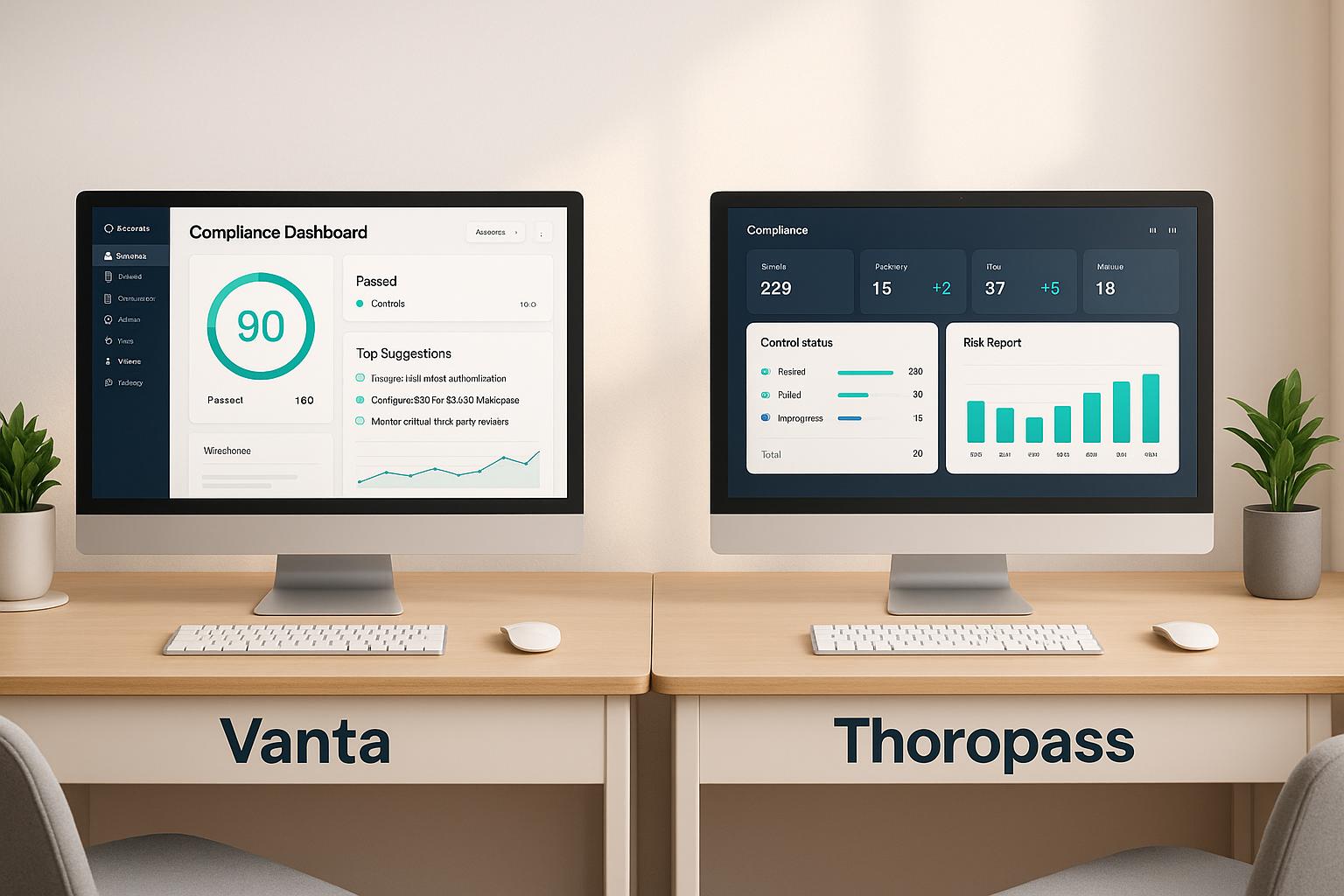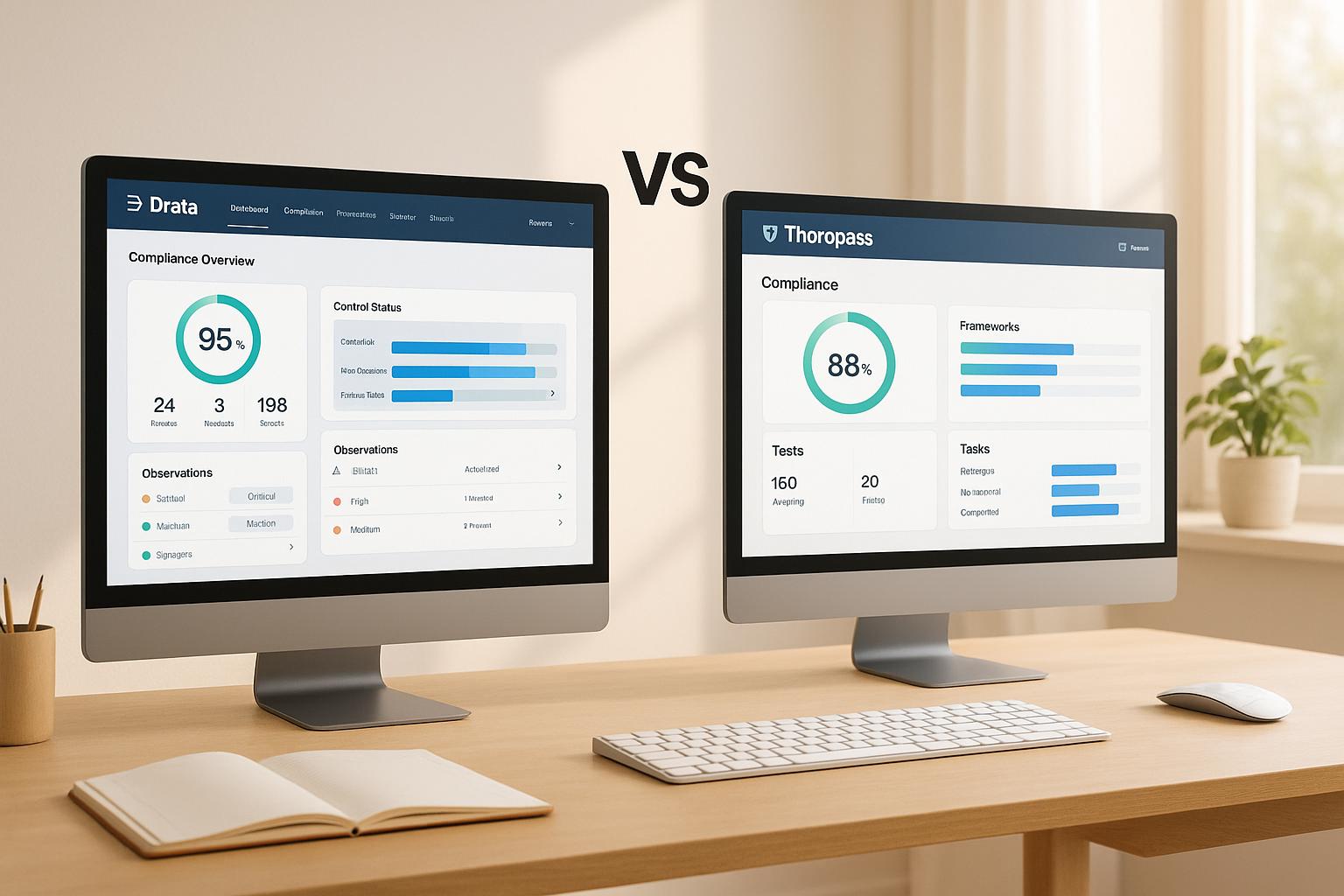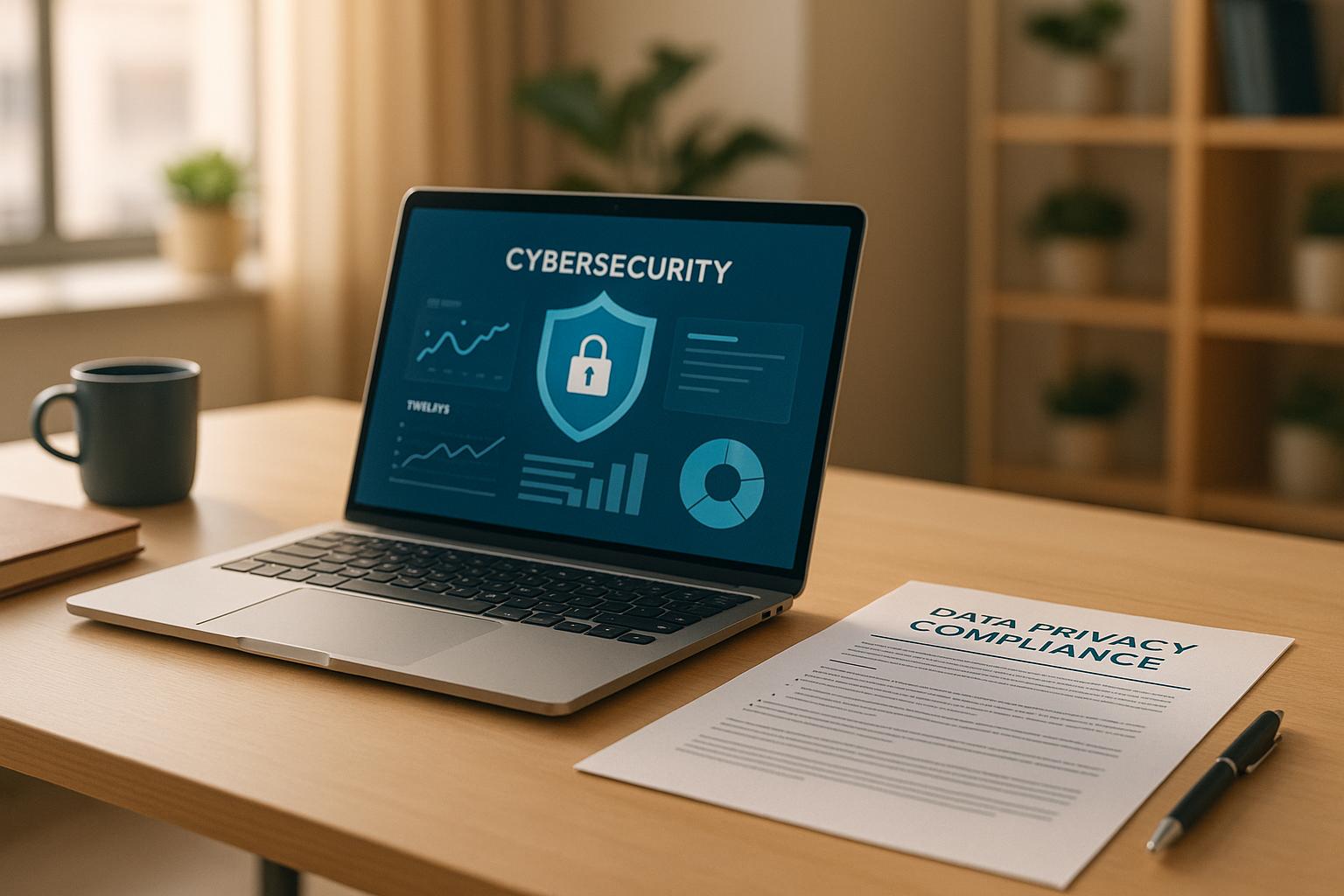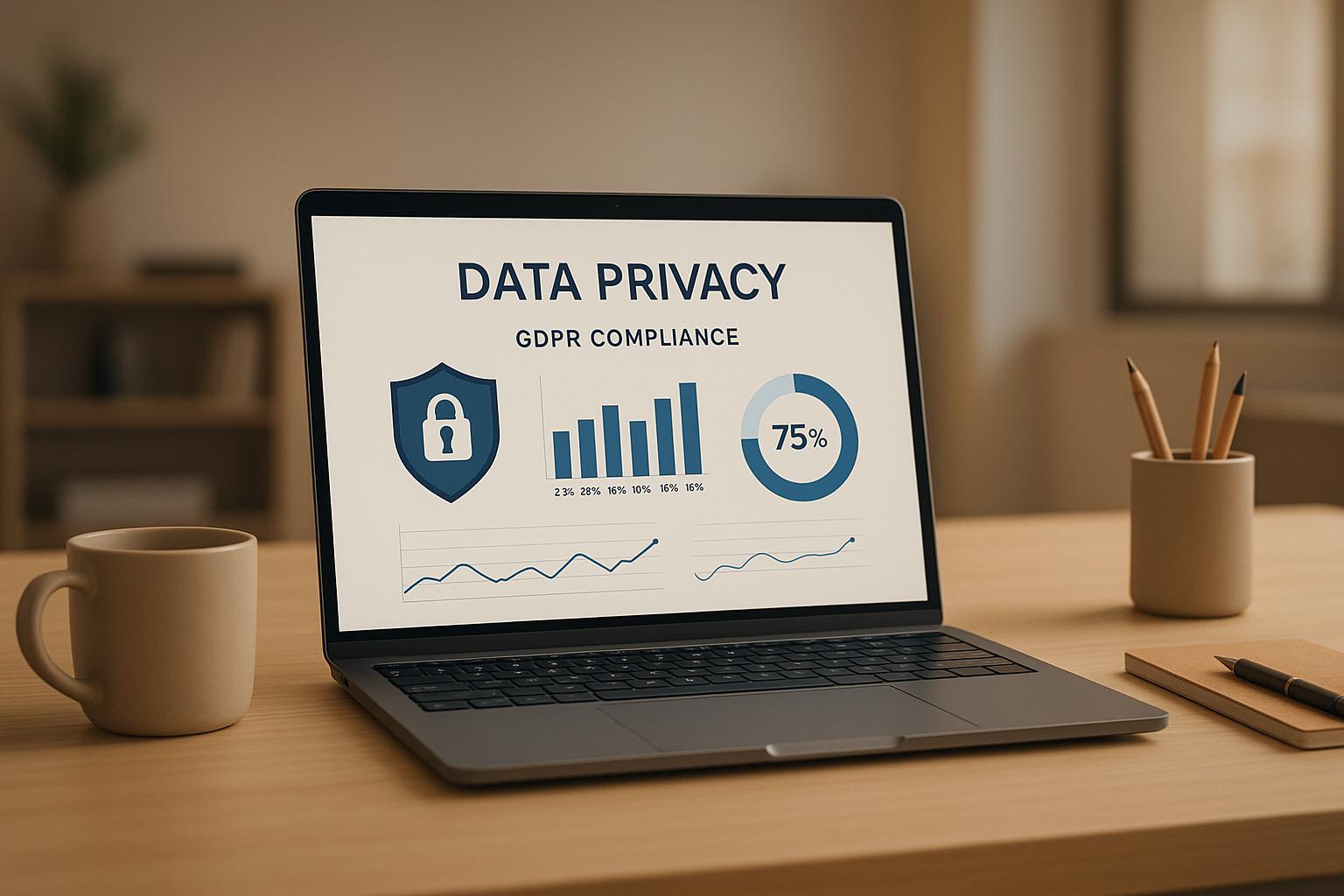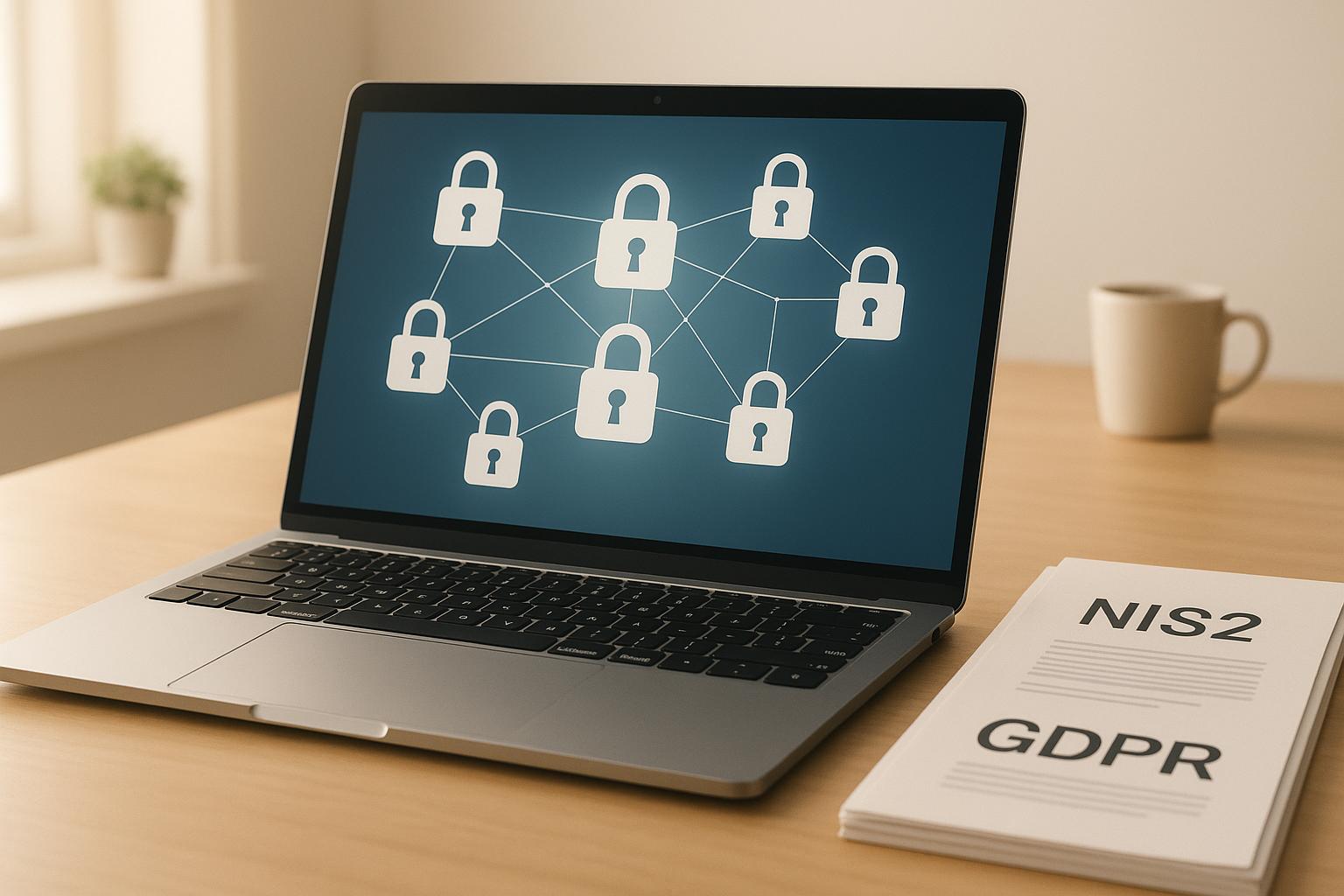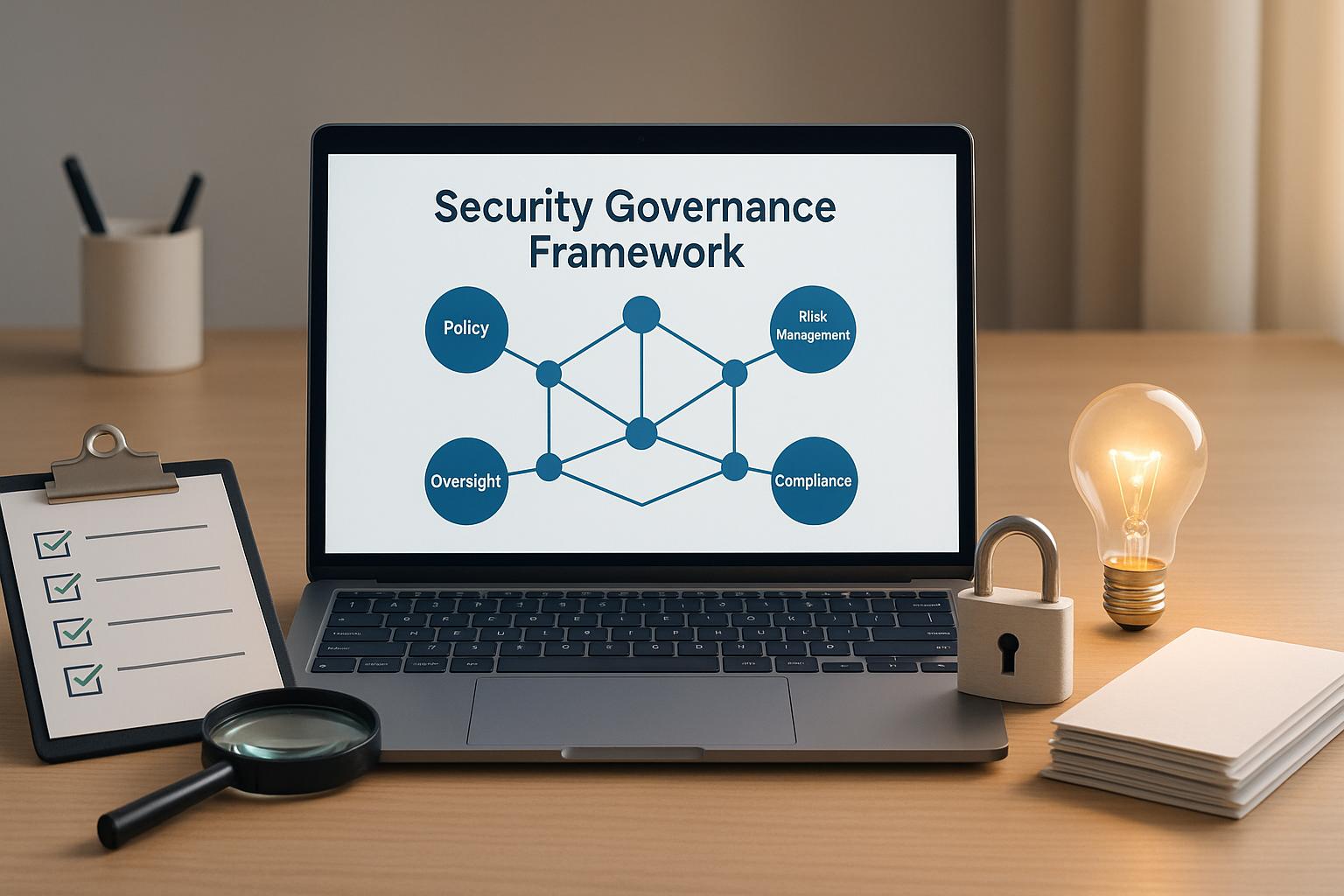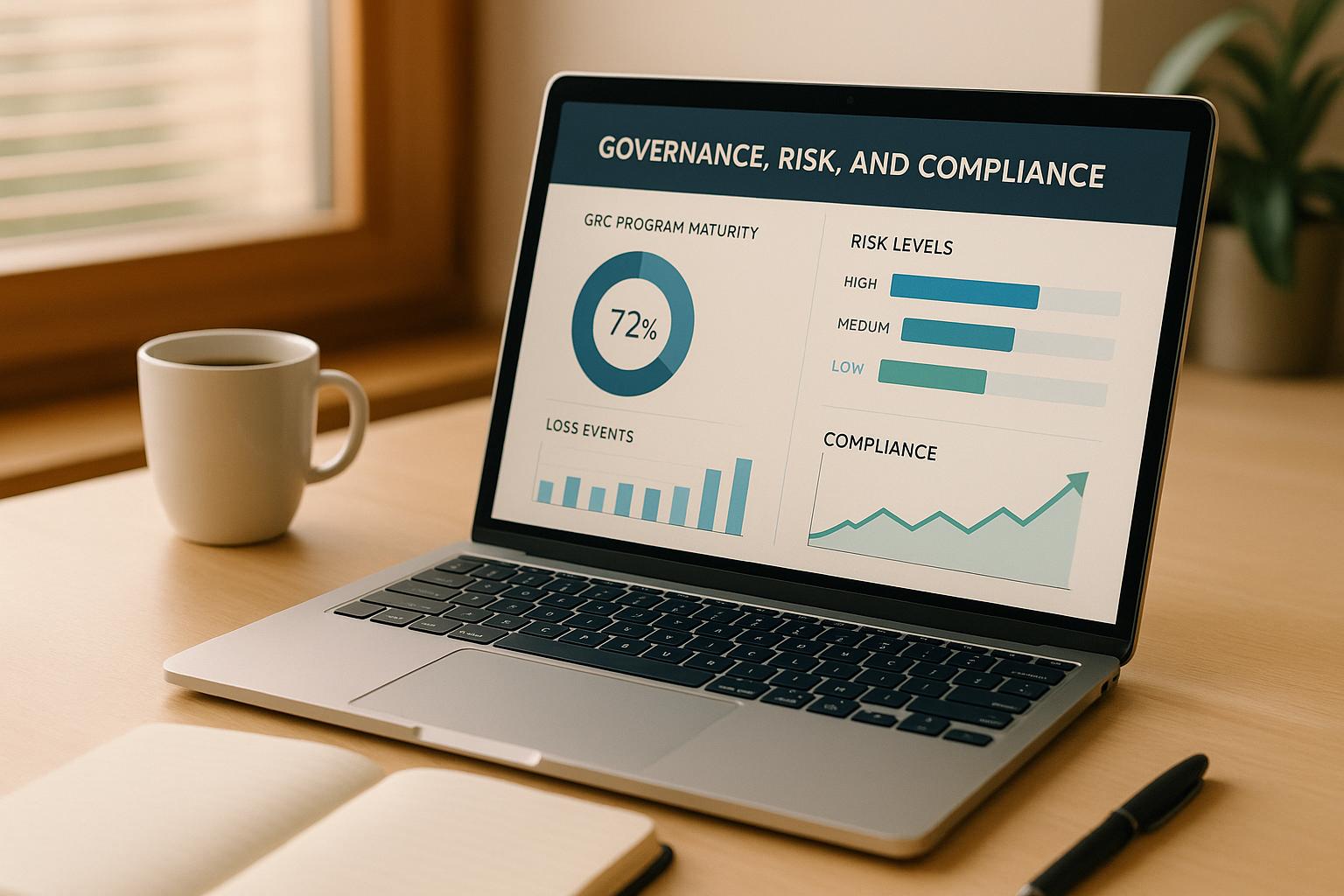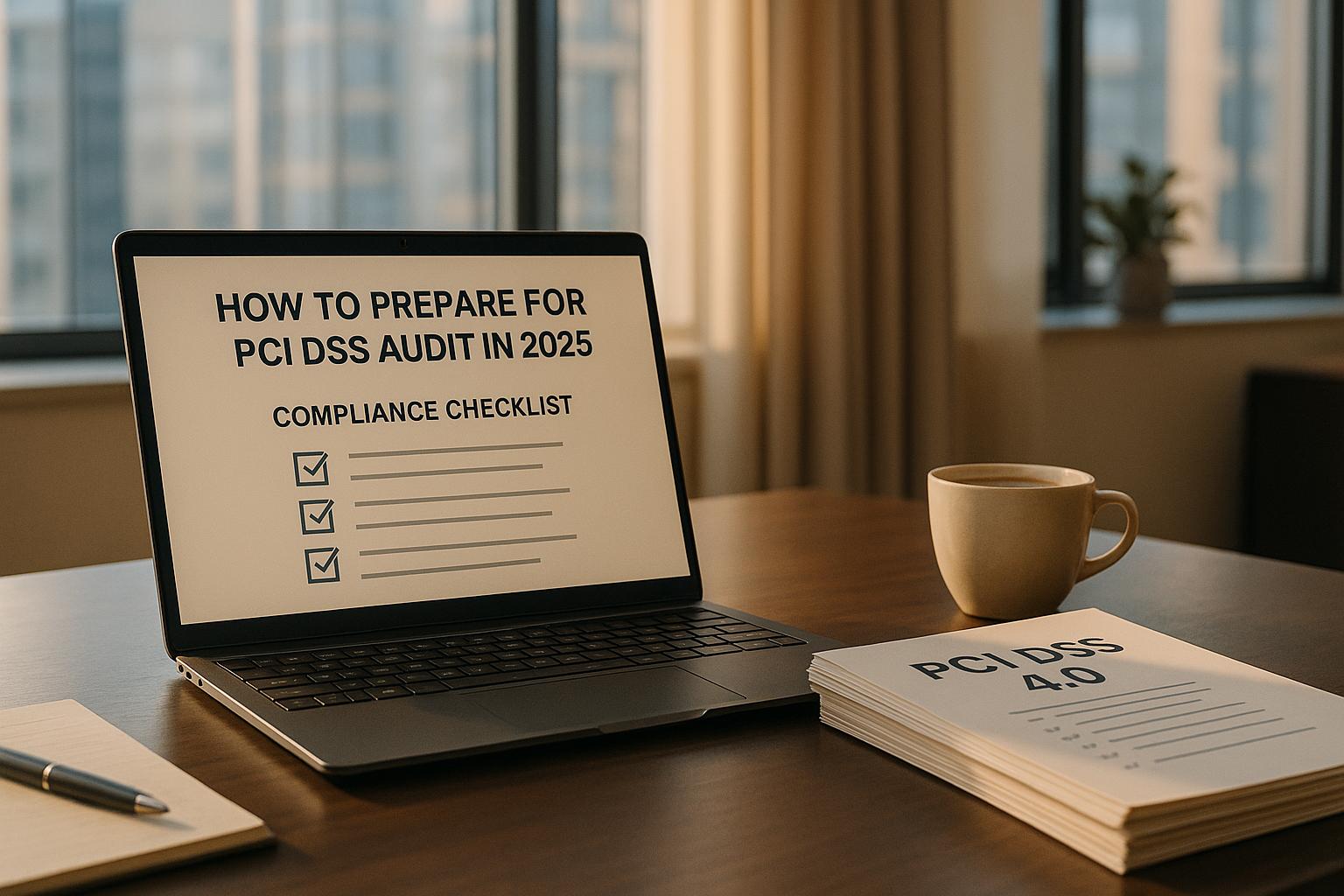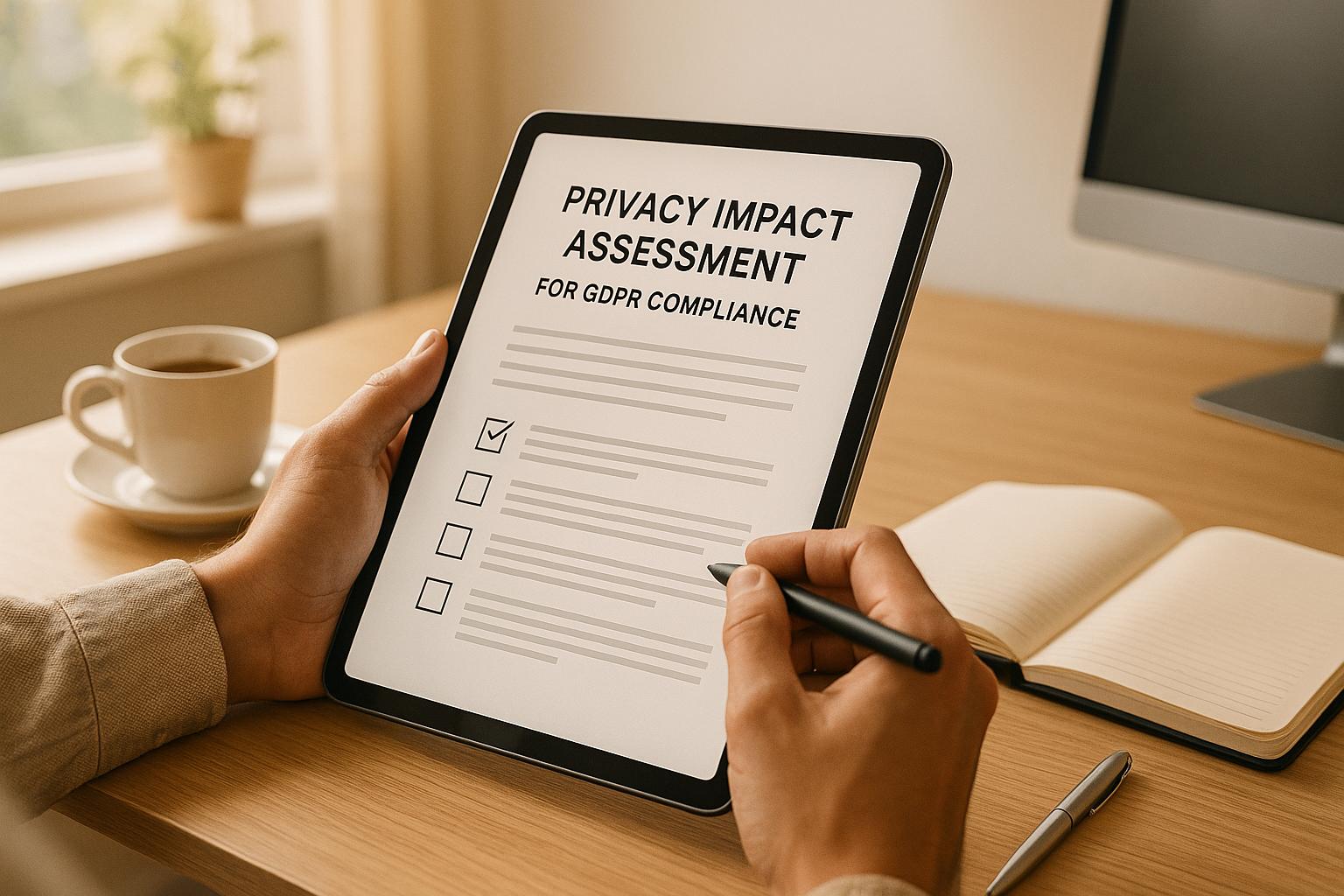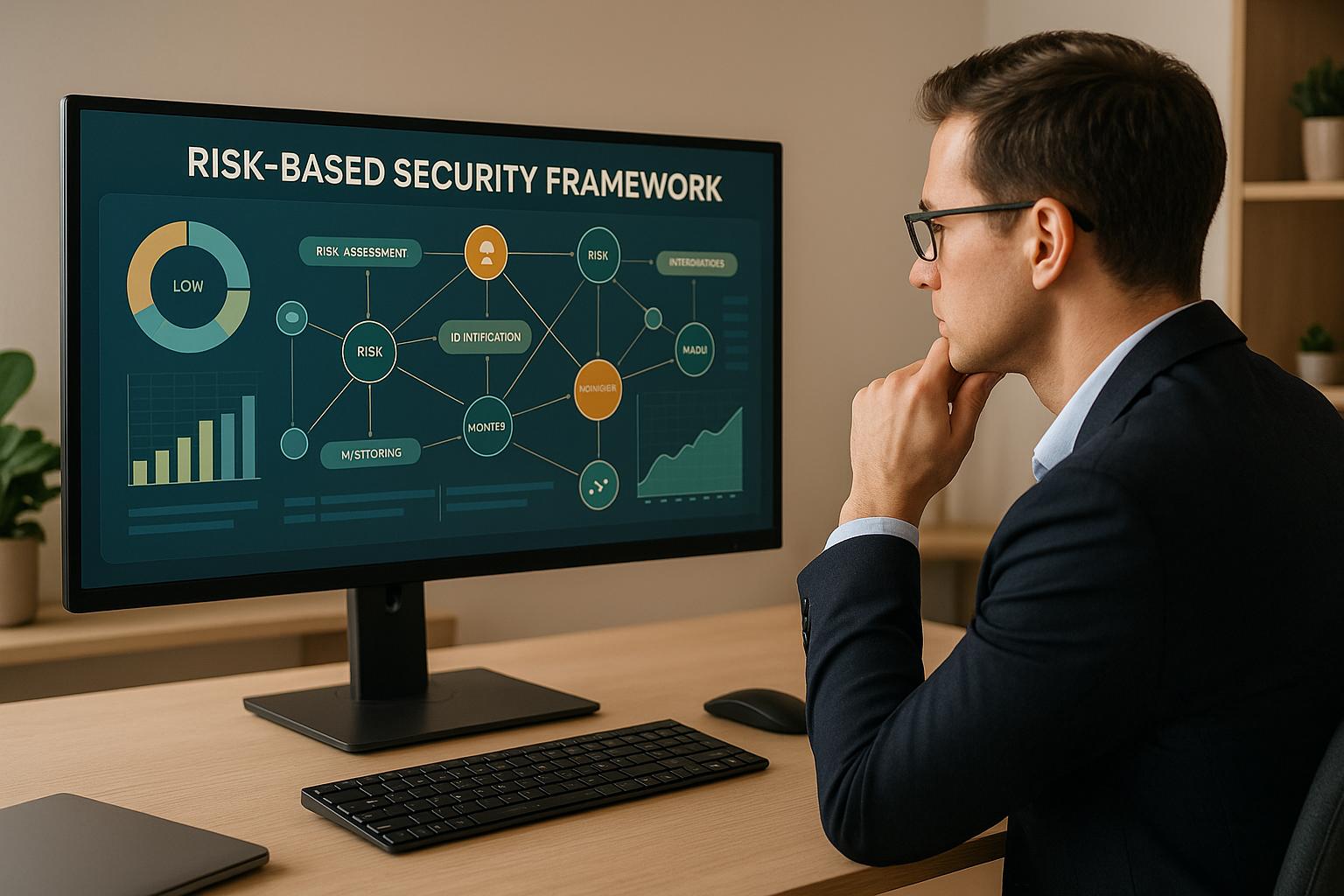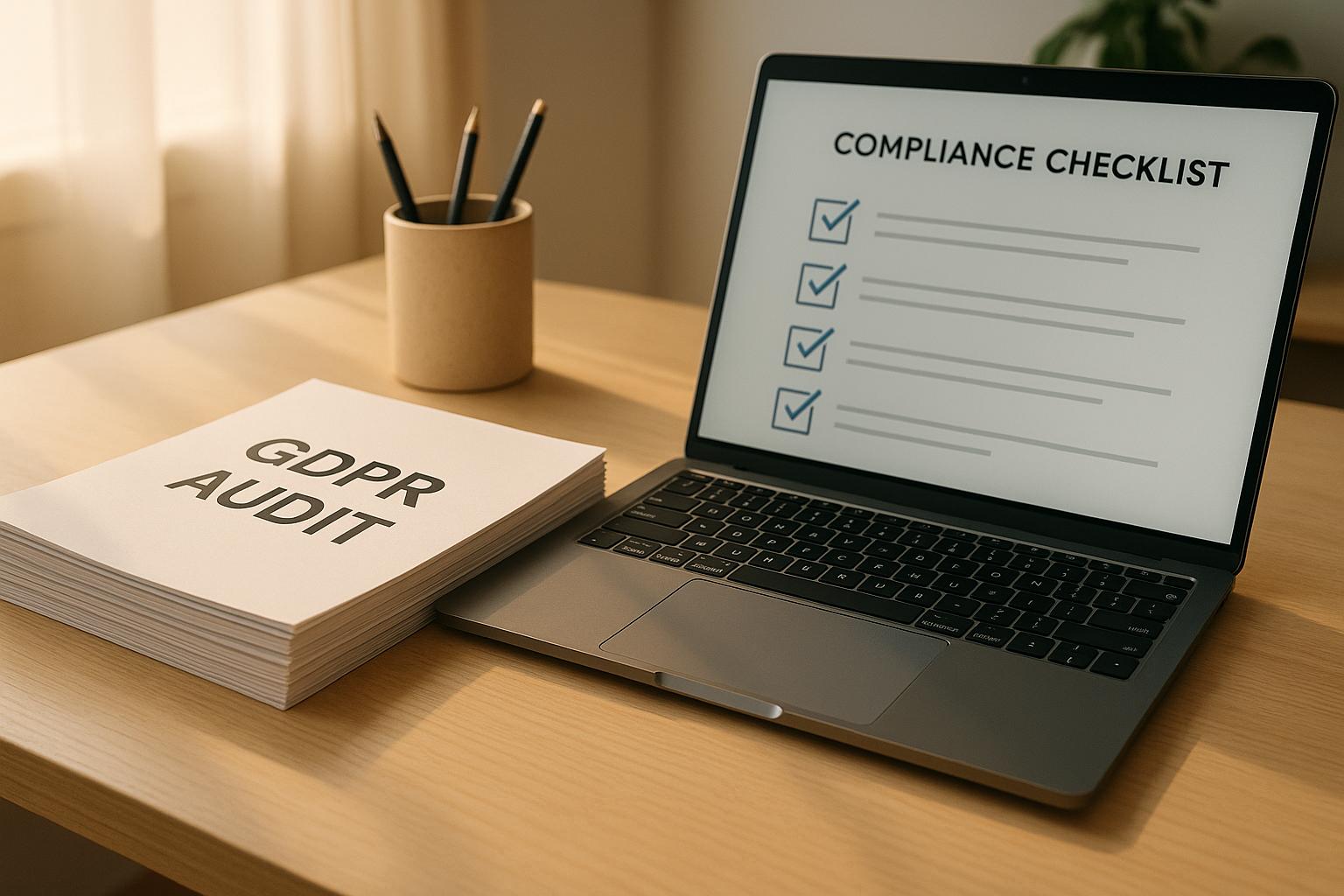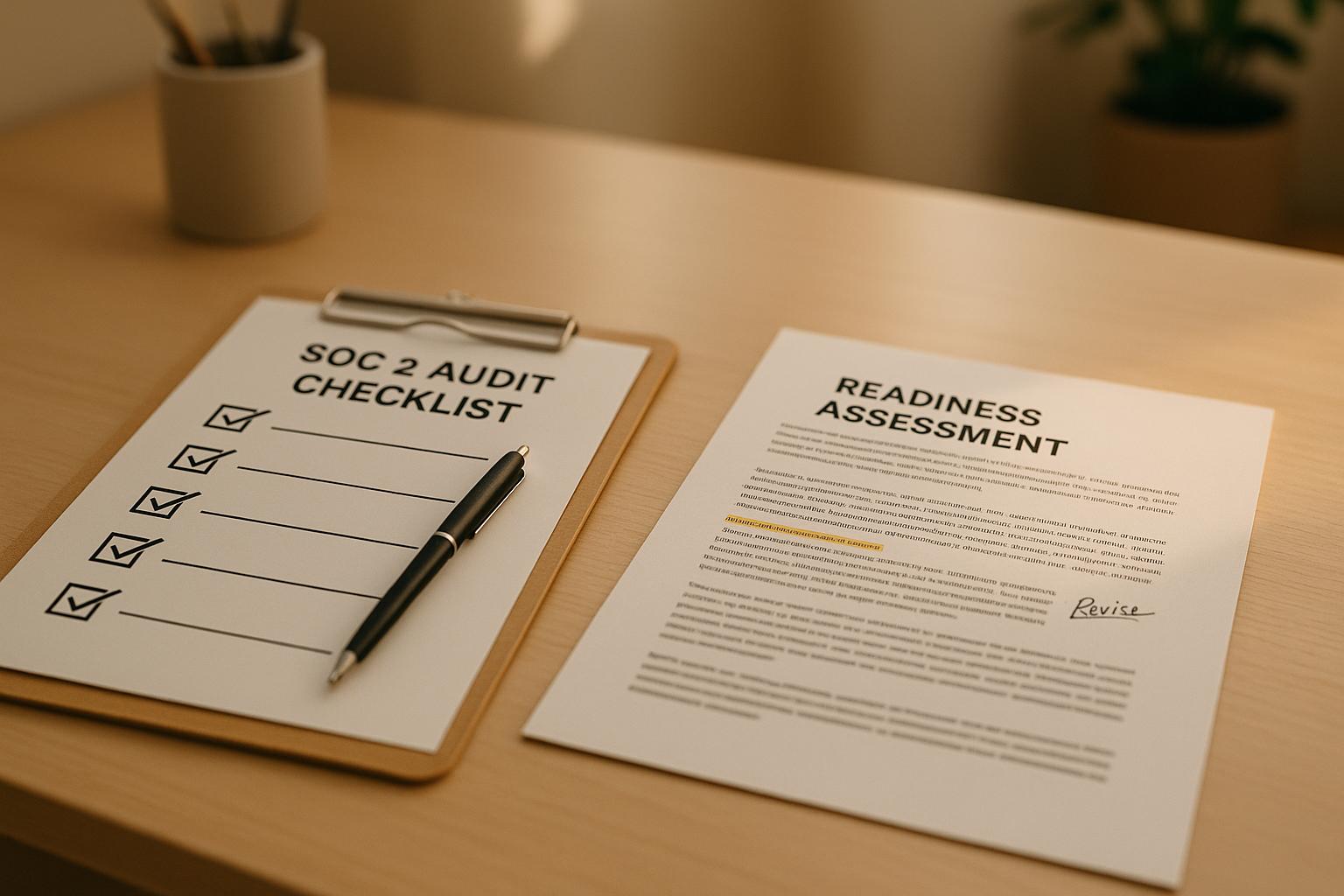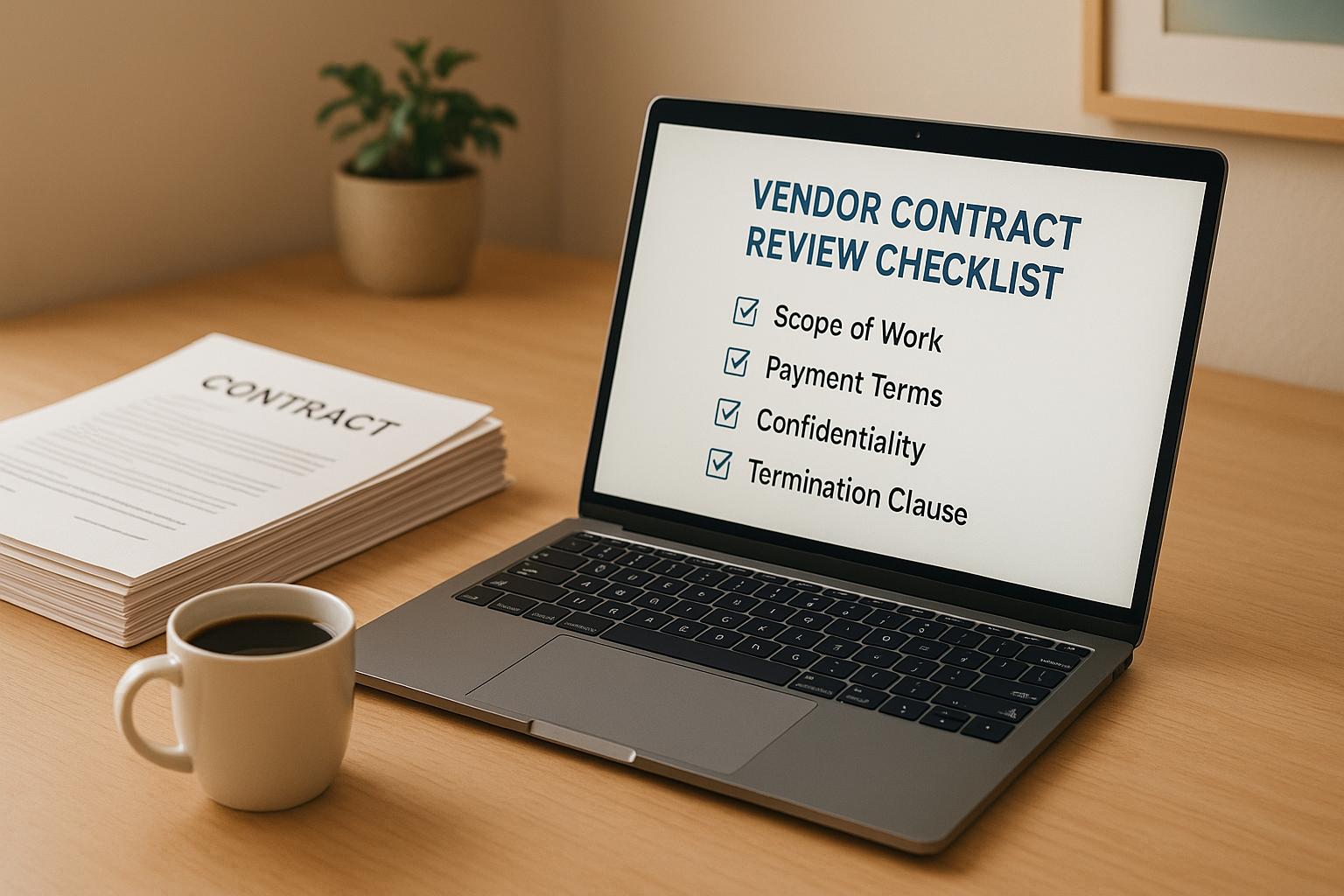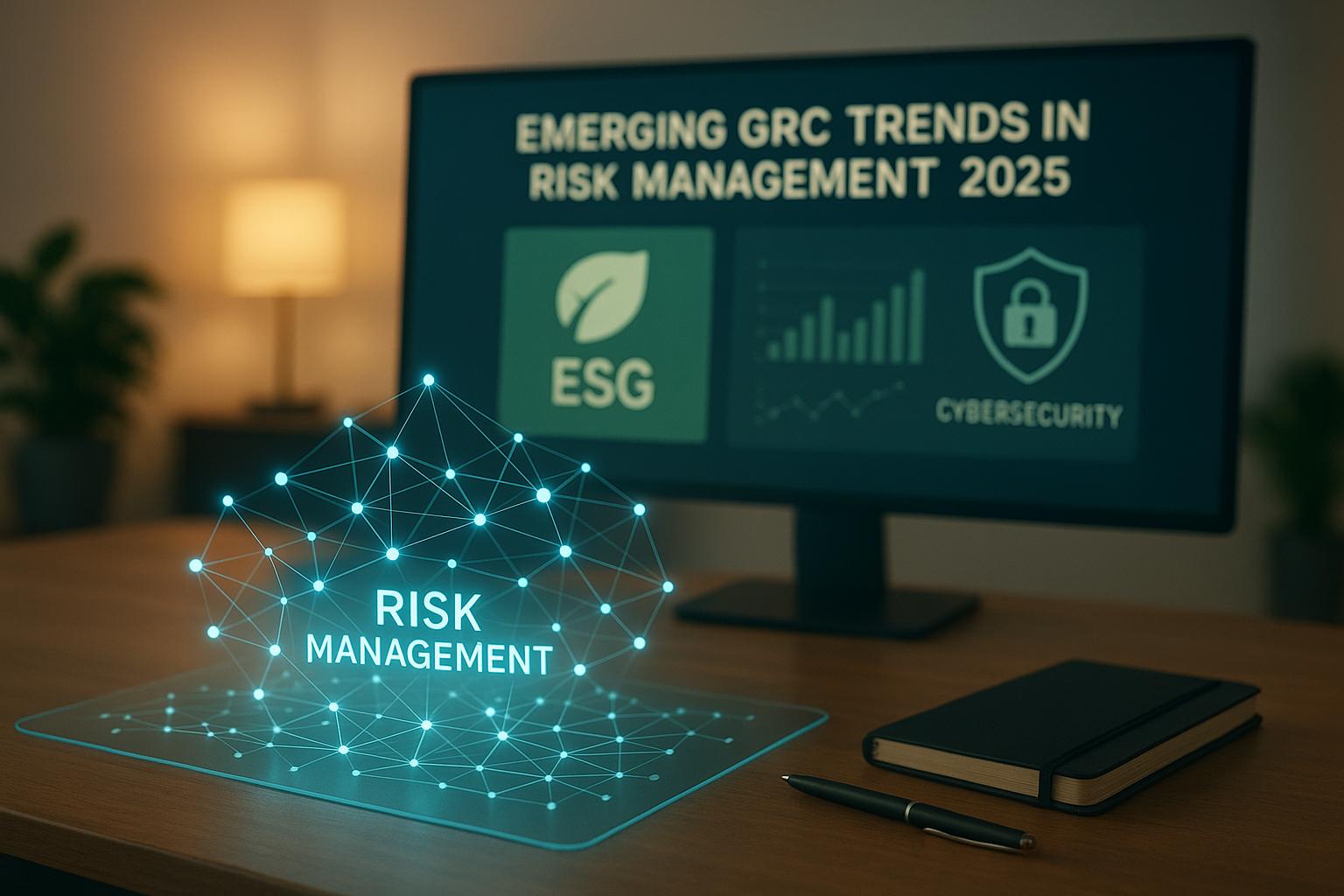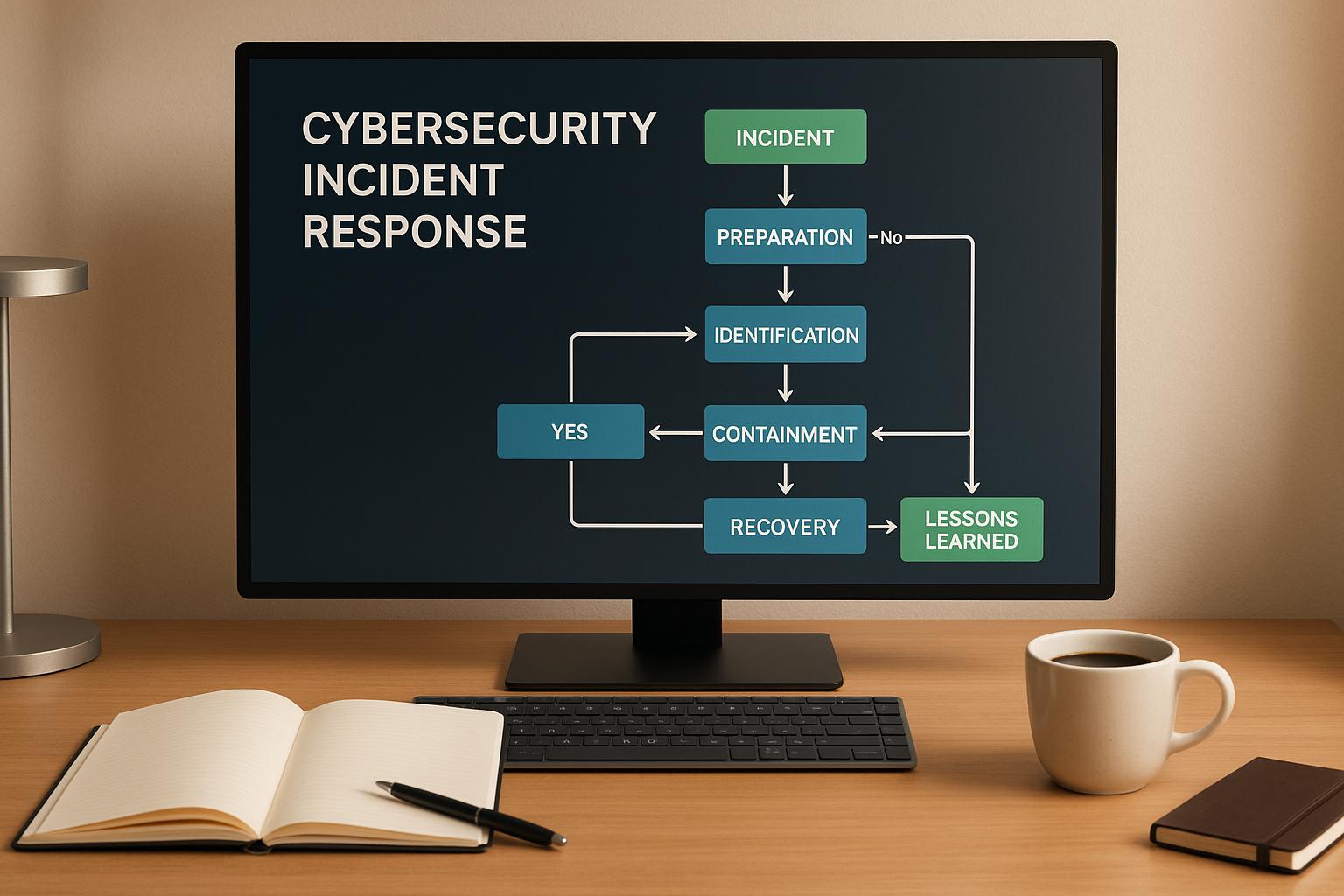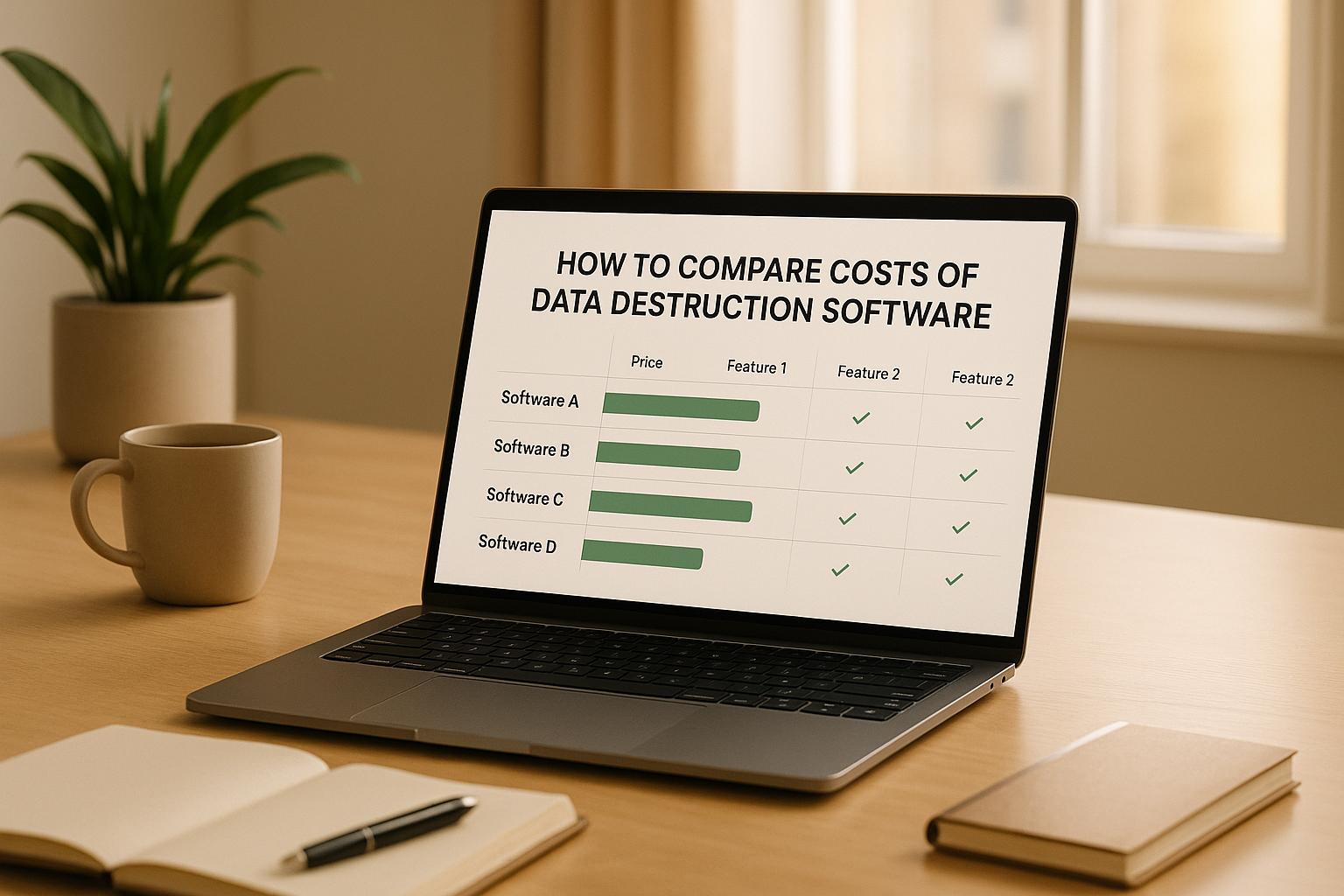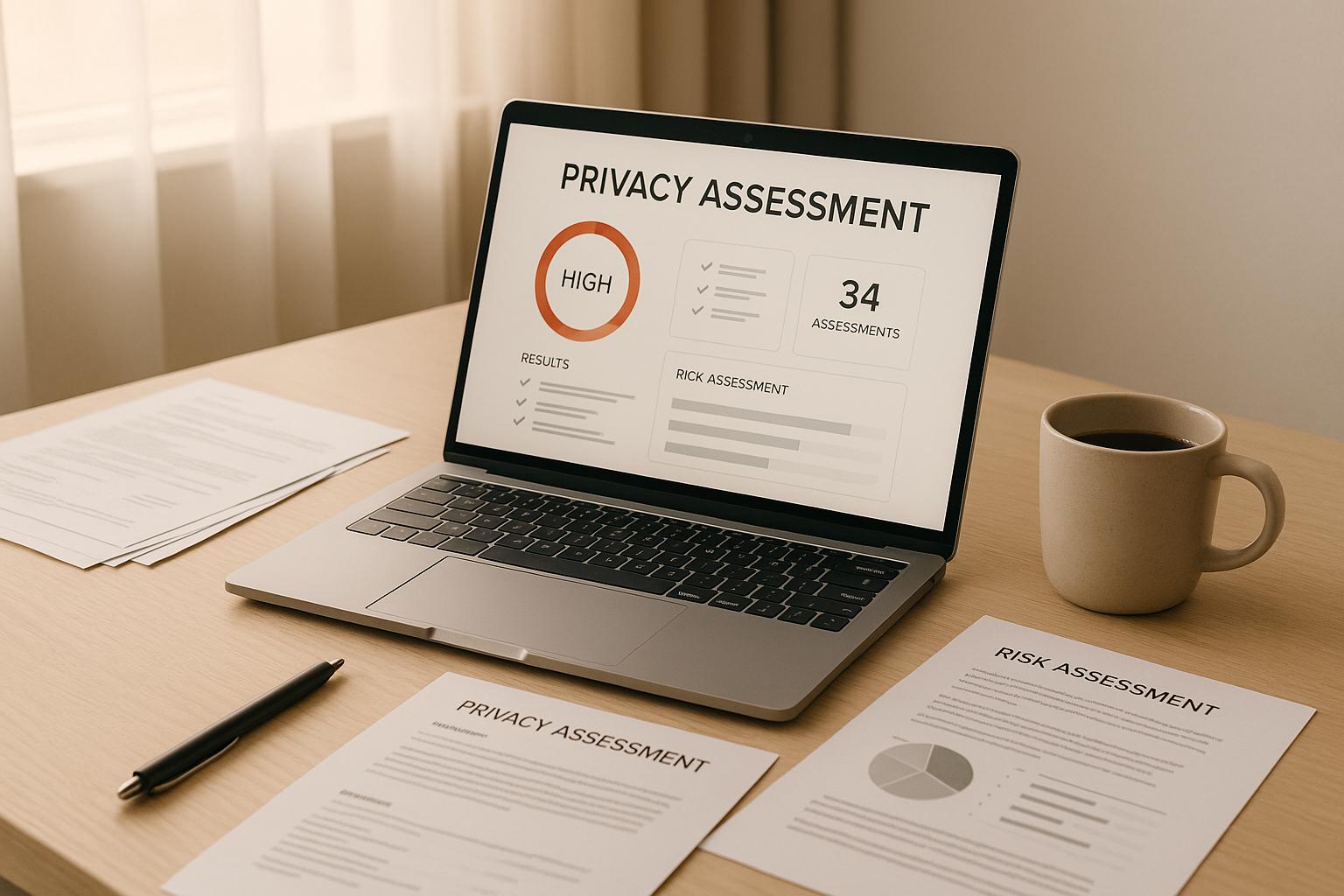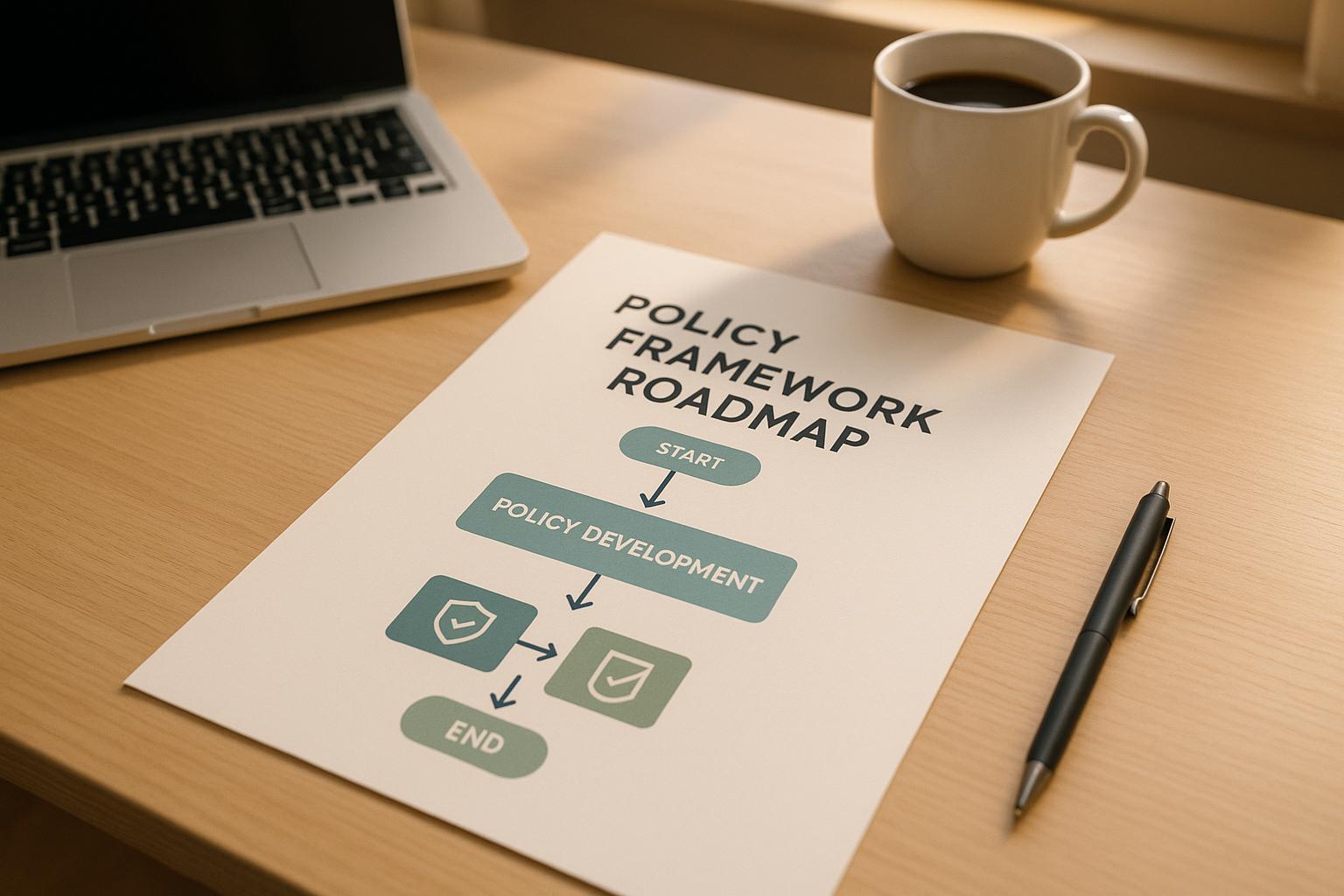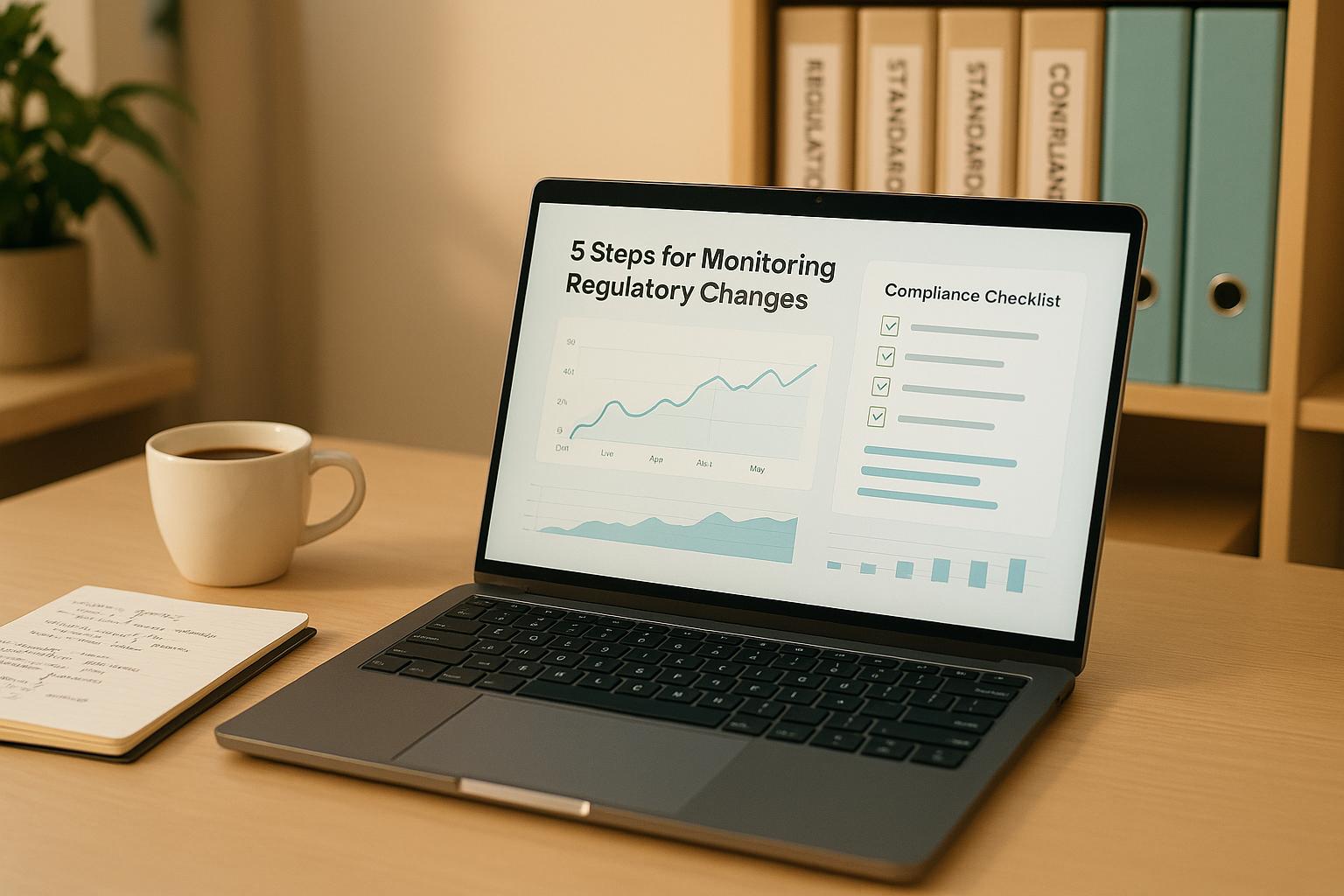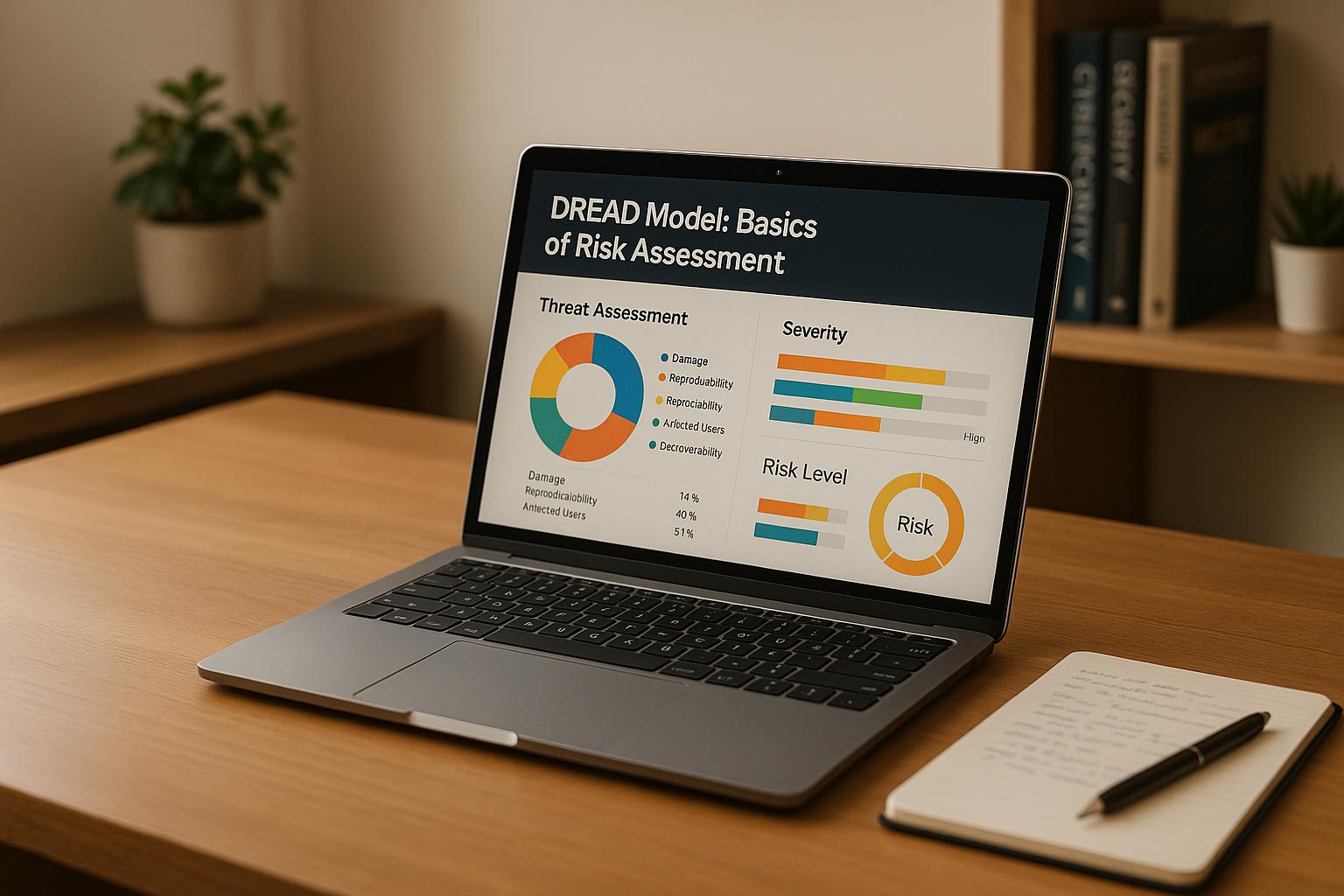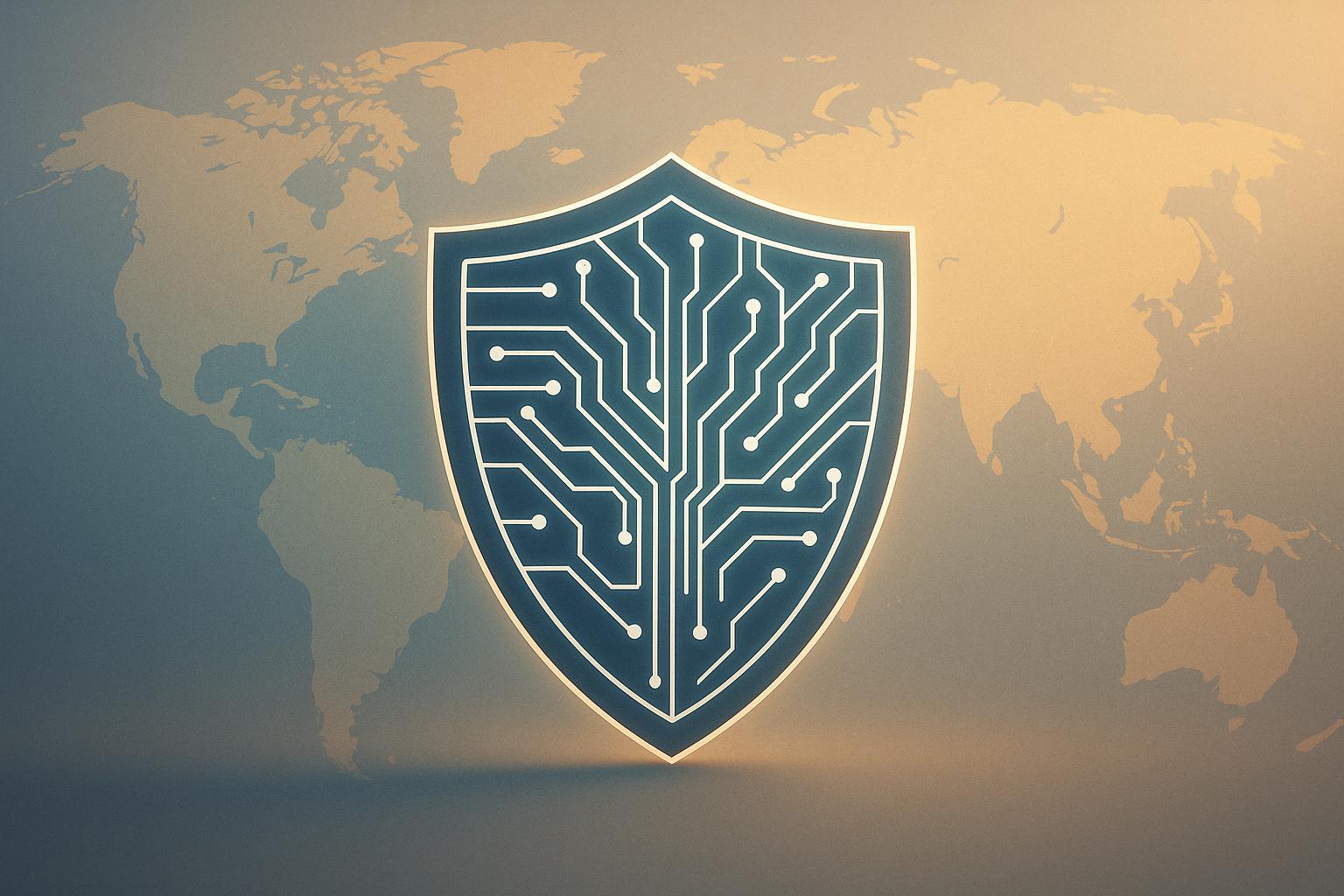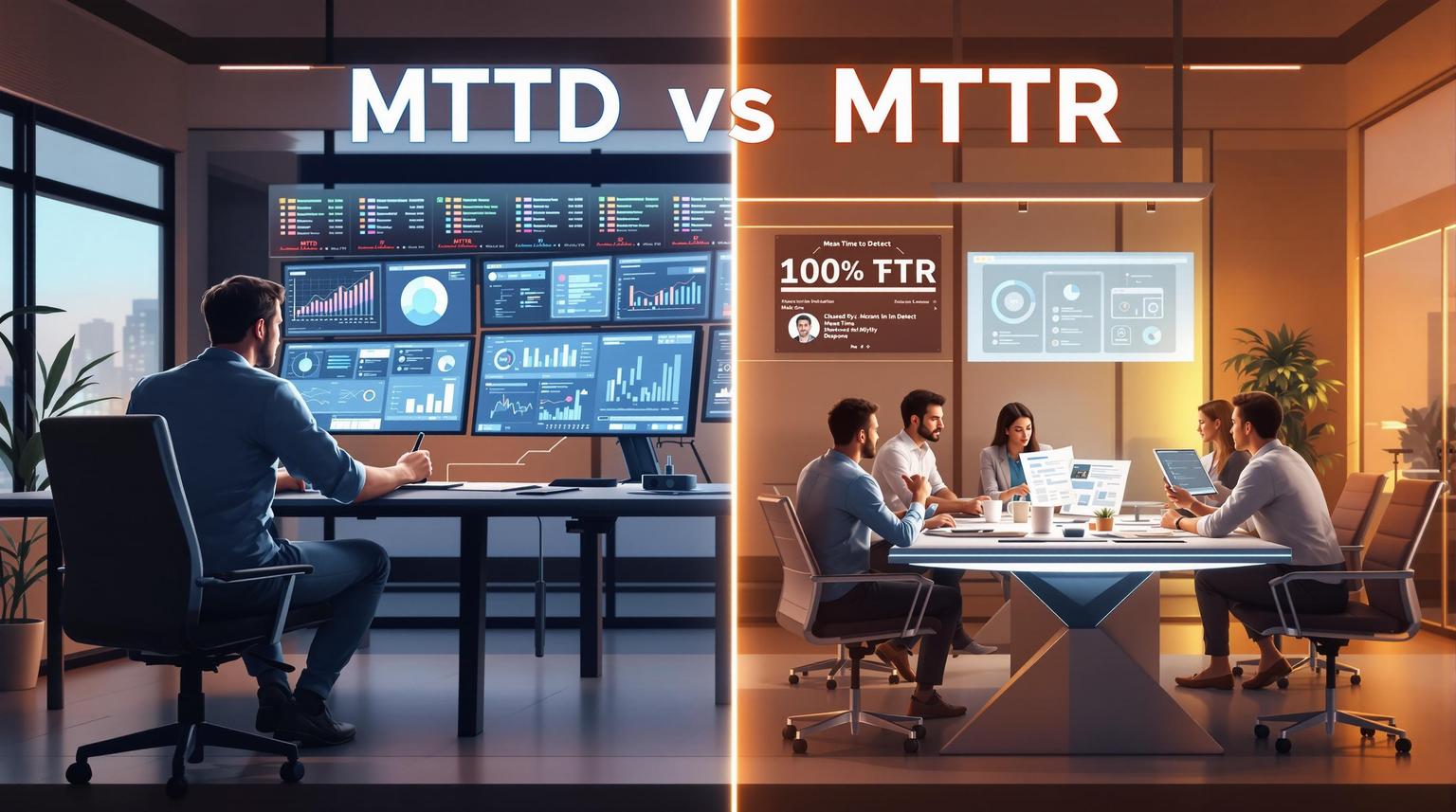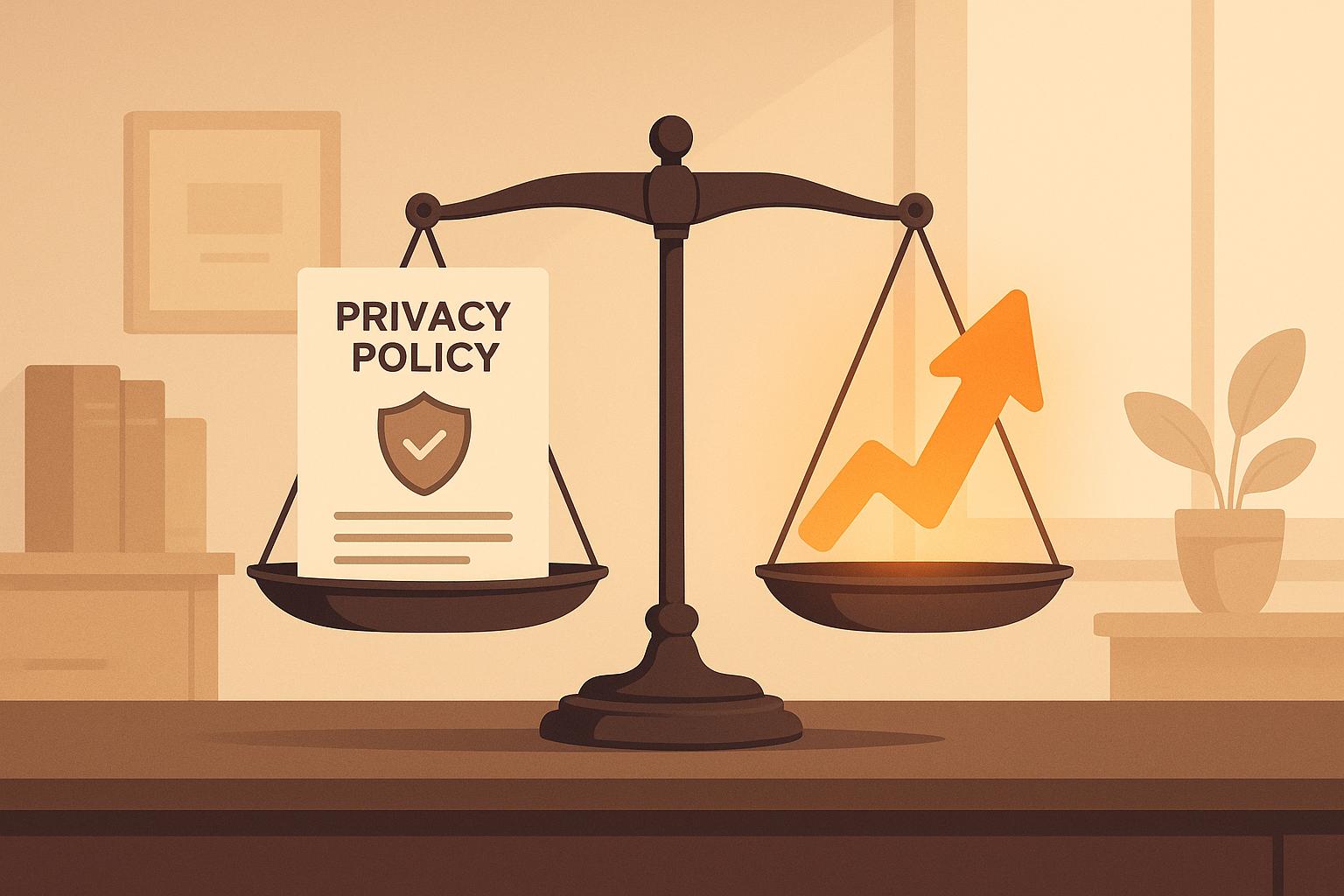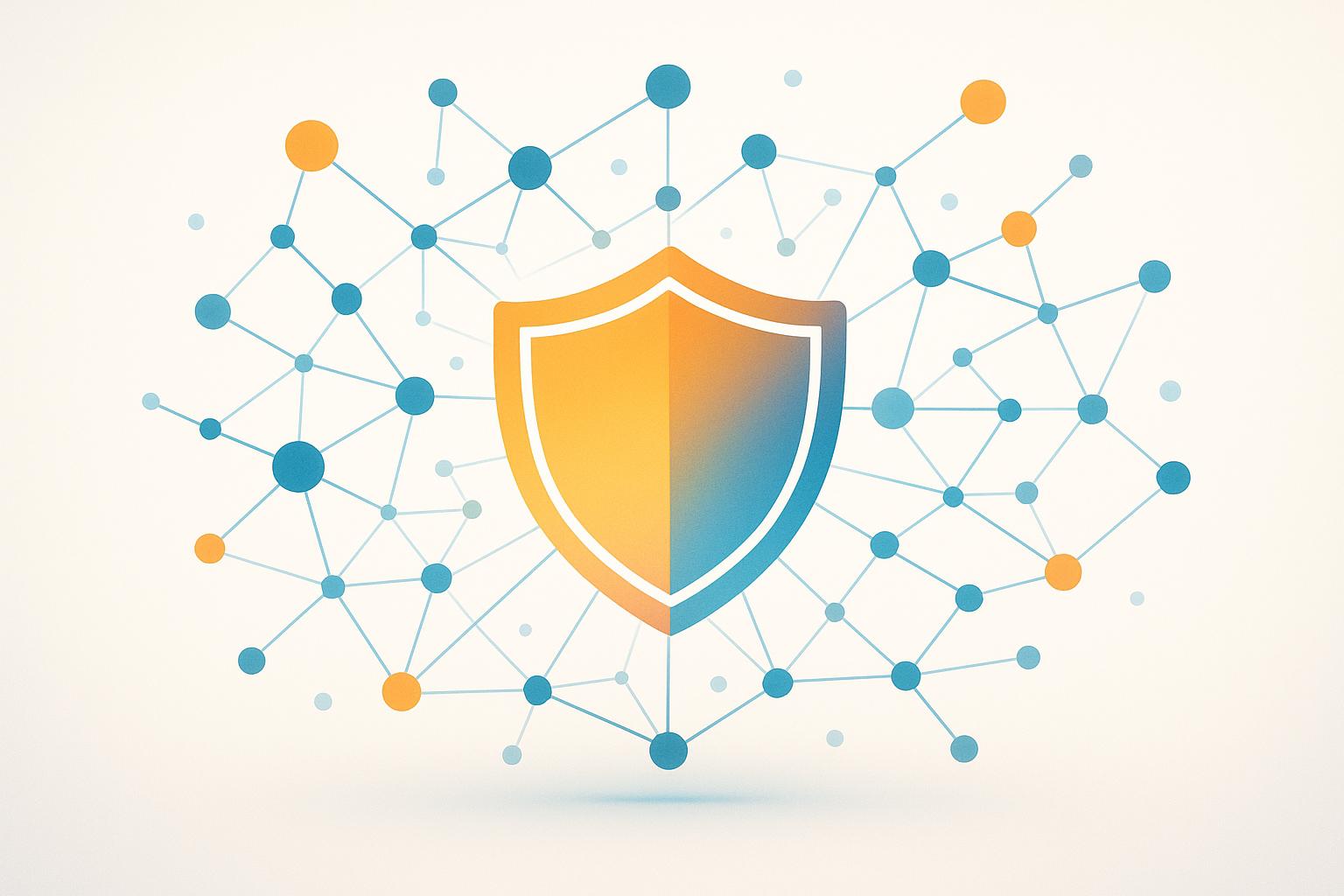
Think your start-up is too small for hackers or that compliance is just for big companies? Think again. Cyberattacks target 43% of small businesses, and 60% of those hit shut down within six months. Compliance isn’t just about avoiding fines; it’s about protecting your business, building trust, and driving growth.
Key Takeaways:
- Hackers target small businesses: They look for easy vulnerabilities, not company size.
- Compliance is for everyone: Start-ups that ignore it face financial losses, fines, and reputational damage.
- Automation helps, but it’s not enough: Tools streamline processes but can’t replace human oversight.
- Cybersecurity is a team effort: It’s not just IT’s job - every department plays a role.
- Compliance isn’t one-and-done: It’s an ongoing process to adapt to evolving threats.
Quick Wins for Start-ups:
- Invest early: Spending $5,000–$25,000 on cybersecurity now can save millions later.
- Train your team: 90–95% of breaches happen due to human error.
- Use affordable tools: Platforms like Vanta and Secureframe simplify compliance.
- Make compliance a habit: Regular audits, updates, and training help you stay ahead.
Cybersecurity compliance isn’t just a cost - it’s a smart investment for your start-up’s future. Don’t let myths hold you back.
After the Audit: Why Cybersecurity Compliance Isn’t the Finish Line
1. Only Big Firms Need to Follow Rules
Many founders think that only big firms need to worry about cyber rules. Yet, the facts show a different truth: 46% of hacks hit firms with less than 1,000 workers, and 43% of attacks go for small firms. Startups, which often put all their focus on making products and growing, may not spend on safety soon enough, making them an easy target for bad guys online. The idea that being small keeps you safe is just not true.
The money loss from a hack can break a startup. In the U.S., a data hack costs a huge $9.44 million on average. For a startup on a small budget, this can wreck them. Add possible heavy fines from rules like GDPR or CCPA, and things get worse fast. Close to 60% of small firms close down within six months of a cyber hit. An investor said not caring for cyber safety can smash your good name - it can end your business.
Not caring about rules can also stop you from growing. Big clients often want papers like SOC 2, HIPAA, or GDPR before they work with you. For startups, getting these papers early is not just about less risk - it helps you shine in the market. Investors check safety steps more and more, knowing one bad hack can ruin their money right away. In fact, rules and legal issues are the fifth main reason startups fail, says a CB Insights study.
The bright side? You don't need a huge team to meet these rules. While 43% of startups see safety and rules as blocks to starting, new tools have made it easier. Automated help can get you there in about two months, and simple cyber steps can cost between $5,000 and $25,000 - way less than a hack might cost.
For startups, spending on cyber safety early is smart, not just safe. Putting 5.6% to 20% of your IT budget on cyber safety builds trust with customers, investors, and partners right from the start. Startups that see following rules as a plus are way more likely to grow big - and not just end up as a warning story.
2. Hackers Like New Small Companies
Some people think hackers just hit big firms; this is not safe thinking. The truth is new small firms are top picks for online bad guys. The numbers show worry: in 2021, 43% of online attacks hit small businesses, and 61% of small and mid-size companies said they were hit by such attacks.
Matthew Olney from Integrity360 tells us why new small firms look good to hackers:
"Cybercriminals are like any other type of criminal in that they look for easy prey. If something is too difficult to breach they'll move on and keep searching for an easier score."
Start-ups are easy targets since they lack strong safety steps and worker training. Look at these facts: only 14% of small and mid-size companies have a plan for cyber safety, 47% of firms with under 50 workers set money aside for cyber safety, and 51% have no IT safety at all.
Threats Keep Changing
The ways hackers use are getting smarter. For instance, 91% of all cyber attacks start with a scam email. Start-ups are also 350% more likely to get tricked by social tricks than big companies. Plus, hackers now use AI to make more clever and aimed attacks.
David Derigiotis, who is the top info officer at Embroker, points out the dangers of these new AI tools:
"Many AI models are becoming open source, meaning anybody can grab the code and tailor it for their own needs. These tools can level the playing field for somebody with malicious intent."
Why Hackers Go After Start-ups
Hackers aim at start-ups for a few big reasons:
- Ransom cash: Start-ups can't handle being down, so they're more apt to pay ransoms. On average, they ask for $116,000.
- Supply chain weak points: Start-ups can be doors to big firms, with attacks on supply chains now beating virus attacks by 40% in 2022.
- Worth a lot data: Info on customers, money details, and new ideas can be used for theft, fake acts or sold off secretly.
- Loose rules: Start-ups get less check on rules, which means not many security steps are made a must.
When People Mess Up
Mistakes by people add to the odds of danger for start-ups. In 2022, 74% of data leaks had some link to human error. Coders are often at risk since they can get to key systems and might skip safety steps to be quick.
The Money Hurt
The money hit from web attacks is huge. In 2020, small firms faced over 700,000 attacks, with damages amounting to $2.8 billion. Even with these dangers, 59% of small shop owners with no cyber safety still think they're too small to tempt hackers.
Start-ups must see that hackers don't care how big you are. What pulls them are your weak spots and what they can take. It's key to know these risks to build up a better guard.
3. Think Compliance is Just for IT?
Many new firms think following rules is only for the IT group. This way of thinking might create big holes, putting the firm at risk of safety breaks and large fines. To really keep the firm safe, every team must take part in following rules, not just the IT pros.
Matt Rosenthal, big boss of Mindcore, makes it plain:
"It's a mistake to think compliance is just the IT team's job. While IT handles the technical controls, compliance requires company-wide engagement."
Following rules isn't just about tech; it's about making sure that every part of a company meets legal and rule-based needs. Not caring about this wide job doesn't just raise risks - it shakes the whole group's safety base.
Why IT Can't Do It All
Just using IT for rules is like locking your main door but not your windows. Even the best tech help - like walls that block bad traffic and code hiding - can't keep a firm safe if other sides act badly, like using customer info wrong. The risk is big: mistakes from not following rules can add costs about $220,000 for each time it happens.
Who Needs to Help?
For rules to work, everyone must help. Here’s how each part helps:
- IT: Puts in tech tools like code hiding and walls that block bad traffic.
- Leadership: Gives what is needed and leads with a focus on safety.
- Legal: Watches for rule changes and makes sure plans fit.
- HR: Sets up worker teaching to stop mistakes by people.
- Operations and Sales: Keeps to safe ways in everyday work.
Why Rules Build Trust
Rules aren't just to dodge fines; they’re also to build trust. A big 84% of buyers like firms with strong safety steps. When all parts agree to follow rules, it stands out as a plus.
Making It Work All Around the Firm
To keep to rules, new firms need a full plan that mixes tech steps with boss moves. This has regular teaching for workers, clear plans for data use, and a strong way to answer to bad events. By getting every part involved, companies can make a culture of safety that holds up rules at every step.
4. Passing an Audit Does Not Mean You Are Safe
Many think that if their start-up passes a check like SOC 2, HIPAA, or GDPR, all is good, and they can look away. But wait - a check is just a picture of how safe you are on one day. It's not a promise that you'll stay safe. This shows why you always need to keep your guard up after an audit.
The Danger that Stays
Even if you have good safety steps in place, danger does not just go away. No group, no matter how ready, can get rid of all risks. As the Hyperproof Team says:
"Residual risk is the risk that exists with controls in place. This type of risk can be thought of as the risk that persists despite preventative measures to minimize the likelihood and/or impact of the risk event."
Think like this: tools like firewalls, secret codes to lock data, and rules on who can get in are key. Yet, those who break in keep getting smarter. They use tricks like fake emails, data theft from other places, or people inside who help them. Risk is always there, hiding in the dark.
Why Audits Fail to Catch New Dangers
Audits can only tell if your tech is safe at one moment in time. But bad guys come up with new ways to attack all the time. They don't wait for your next check-up; they're always finding and using weak spots. This means just waiting for audits puts your group at risk to these new dangers.
How to Keep Safe All the Time
For this, new companies need to think of rules as just the start. Think of safety as a never-ending job. Do tests to break into your own systems, run fake attacks, and keep checking your safety measures. By always looking for risks and making your defenses stronger all year, you can be ready for what may come.
Making Safety Last
To control risks well, make safety part of every day's work. Set up instant warnings, keep good records of who gets into your systems, and train your people to react fast if something goes wrong. By making these steps a regular part of work, you build a habit of safety that does more than just pass tests.
5. Start-ups Can't Afford Compliance
Many start-ups shy away from investing in cybersecurity compliance, often fearing the costs involved. But here's the truth: ignoring compliance can cost far more in the long run. Fixing security gaps early is not just smarter - it's significantly cheaper than dealing with the aftermath of a breach. Let’s break down why proactive investment makes financial sense.
The Numbers Don’t Lie
On average, compliance costs businesses $5.47 million. Compare that to the staggering $14.82 million organizations face when they fail to meet data protection standards. That’s nearly three times more expensive to clean up after a breach than to prevent one in the first place.
Start-ups also tend to overestimate what cybersecurity will cost. Basic protection measures typically range from $5,000 to $25,000. A good rule of thumb is to allocate 5% to 10% of your IT budget to cybersecurity. For most start-ups, this is a manageable investment that can save millions down the road.
The Real Cost of Skipping Compliance
The financial penalties for avoiding compliance are just the tip of the iceberg. A breach can destroy customer trust - 65% of consumers lose confidence in a company after a data breach.
Operational downtime is another hidden cost, running as high as $5,600 per minute. And let’s not forget legal fines and ransom payments. For instance, the 2021 Colonial Pipeline ransomware attack resulted in a $4.4 million payout just to regain access to their systems. These costs can cripple a start-up, making compliance a necessity rather than an option.
How Start-ups Can Afford Compliance
The good news? Start-ups don’t need enterprise-level budgets to build a solid cybersecurity foundation. Start with affordable, high-impact solutions. Tools like multi-factor authentication, firewalls, and endpoint protection can provide strong defenses without draining your budget.
There are also free or low-cost options for critical data protection. For example, cloud-based backup solutions like Google Drive or Dropbox offer affordable security for your data. Simple measures like enforcing strong password policies and training employees to spot phishing attempts can prevent many common threats.
Instead of treating security as a one-time project, embed it into your daily operations. Regular software updates, ongoing employee training, and strict access controls not only enhance security but also spread costs over time. Early investments in these areas can reduce risks and set your business up for sustainable growth.
The Payoff of Early Investment
Getting ahead on compliance pays off in more ways than one. Cyberattacks can shut down small businesses within months, so acting early is crucial. Beyond protection, effective compliance can provide insights into customer behavior and market trends, helping you make smarter business decisions.
Clients and partners increasingly expect evidence of strong cybersecurity practices before entering into business relationships. By prioritizing compliance, you position your start-up as a trustworthy and reliable partner.
The key is to strike a balance - address your biggest risks first without overextending your resources. Start with the essentials and scale your protections as your business grows. Early action isn’t just about avoiding disaster; it’s about building a foundation for long-term success.
6. Compliance Is a One-Time Task
Some businesses mistakenly believe that once they pass an audit or set up controls, their compliance journey is over. This "set it and forget it" approach can leave organizations exposed to new threats and evolving regulations. It ties back to earlier discussions on the limitations of audits and highlights the risks of treating compliance as a one-off effort.
As the National Cybersecurity Alliance states:
"Cybersecurity is an ongoing and dynamic process that demands continual monitoring, adaptation, and enhancement."
Why Compliance Is Never Finished
Think of compliance like maintaining a car - it requires consistent care and attention. Regulations are constantly changing to address new threats and technologies. What worked last year might not meet today's standards.
For instance, ransomware attacks surged by 95% in 2023, and the average cost of a data breach reached $4.88 million in 2024. These numbers underscore the need for regular updates to security measures.
Take HIPAA compliance as an example. It’s not a one-and-done task because regulations evolve, and the risks to sensitive patient data shift over time. The same principle applies to frameworks like SOC 2 and GDPR, which require ongoing attention to stay effective.
The Risks of a "One-and-Done" Mindset
Treating compliance as a checkbox exercise creates a false sense of security. This mindset is particularly dangerous when you consider that 43% of cyberattacks target small businesses. Even more alarming, 60% of small businesses shut down within six months of a breach. A single audit or initial setup won’t prevent security measures from deteriorating over time.
How to Build a Sustainable Compliance Strategy
To stay ahead of risks, start-ups need to integrate compliance into their everyday operations. Instead of asking, "Are we compliant?" shift the focus to, "Are we secure right now?". This involves setting up regular routines for security audits, reviews, and testing. At a minimum, schedule comprehensive risk assessments annually. As your business grows and adopts new tools or technologies, more frequent reviews may be necessary. Documenting all compliance activities is also critical to maintaining a clear audit trail.
Stay updated on industry changes, including new regulations and emerging threats. Use monitoring systems to track these developments and adjust your compliance measures accordingly. Regular employee training ensures everyone understands their roles in maintaining compliance. Additionally, managing third-party risks isn’t a one-time task - it requires continuous due diligence, not just an initial review.
Simplifying Continuous Compliance
Ongoing compliance doesn’t have to drain your resources. Automating routine tasks can make the process more manageable. Tools like compliance management software offer real-time insights into your security posture and help identify issues before they escalate. This investment is worthwhile - cybercrime is projected to cost the world $10.5 trillion annually by 2025. By committing to continuous compliance, you’re not just avoiding fines; you’re protecting your business from potentially devastating losses.
7. Outsourced IT Covers All Security Needs
Start-ups often believe that outsourcing IT services automatically covers all their cybersecurity and compliance needs. However, this assumption can create a gap between expectations and reality. While outsourced IT providers can be a helpful resource, they don't always ensure full security coverage or compliance with regulatory standards.
Here’s a sobering fact: 61% of organizations reported a third-party data breach or security incident last year, up from 49% the year before. Even more troubling, 50% of U.S. businesses experienced a breach or cyber attack due to third-party access to their networks. These statistics highlight the risks of relying solely on outsourced IT for security and compliance.
The Gaps in Outsourced IT
Outsourced IT providers often offer standardized solutions, which may not address your specific compliance needs. Their primary focus is on keeping systems operational rather than ensuring adherence to frameworks such as SOC 2, HIPAA, or GDPR. During emergencies, response times can vary since providers usually manage multiple clients simultaneously. This can lead to your needs being deprioritized during a critical security event. Additionally, these providers might lack an in-depth understanding of your daily operations, making it harder to identify threats that are unique to your business.
The Control Problem
Outsourcing cybersecurity can also mean losing some control over your data and security processes. For example, during a compliance audit, you’ll need to provide documentation and evidence of your security controls. If your outsourced provider hasn’t kept proper records or failed to meet specific compliance requirements, your business - not the provider - will bear the consequences.
The financial stakes are high. The average cost of a data breach now stands at $4.88 million. These costs ultimately fall on your business, not your IT partner.
Building a Balanced Approach
To address these challenges, start-ups need to approach outsourcing with a well-thought-out strategy. Begin by conducting thorough due diligence on potential vendors. Review their security certifications, confirm they align with regulatory standards, and ensure contracts include detailed service level agreements, non-disclosure agreements, and specific security requirements.
It's also essential to implement continuous security monitoring tools that give you visibility into your security posture, even when working with external providers. Use role-based access controls and adopt Zero Trust principles to limit the access outsourced providers have to your systems. Regular communication with your provider is key - request updates and clarify how they handle high-priority situations.
Maintaining Internal Oversight
Even with outsourced IT support, your business must maintain internal processes to oversee vendor relationships, conduct regular compliance checks, and ensure your security measures align with regulatory requirements.
A hybrid approach works best. By combining outsourced expertise with strong internal oversight, you can benefit from external skills while retaining control over critical compliance and security decisions. Remember, outsourcing IT doesn’t shift the responsibility for cybersecurity compliance away from your business - it remains firmly in your hands.
sbb-itb-ec1727d
8. Automation Makes Security Worse
Some start-ups hesitate to embrace cybersecurity automation, fearing it could compromise their security processes. This concern often arises from misunderstandings about how automation works and a reluctance to relinquish control over critical decisions. A closer look at a well-known case can help dispel these fears.
In 2017, Equifax experienced a massive data breach that exposed the personal details of 147 million Americans. A key issue was a missed patch - Equifax failed to address a known vulnerability (CVE-2017-5638) in its Apache Struts web application framework. This wasn’t a failure of automation but rather a lapse in oversight, highlighting that human error, not automation, was the root cause.
The Real Benefits of Security Automation
For start-ups, security automation can lead to measurable improvements. A Forrester study reported a 361% ROI from automated security risk processes. Additionally, over 74% of breaches are linked to human error within networks, making automation an essential safeguard.
"Security automation minimizes human error and enhances operational efficiency by automating repetitive tasks such as threat detection, incident response, and vulnerability management." - Balbix
Automation shines in managing routine tasks, such as collecting and analyzing data, generating reports, and monitoring systems. By providing real-time insights into compliance, it enables start-ups to adopt a proactive stance instead of scrambling to address issues during audits.
Where Automation Adds the Most Value
Start-ups gain the most from automation in areas where manual processes often create delays. For example, automated patch management ensures vulnerabilities are addressed promptly, while continuous log analysis helps identify anomalies that might be missed during busy periods.
Incident response also sees significant improvement. Automated systems can execute pre-defined actions to contain and remediate threats quickly, cutting response times from hours to just minutes. Compliance reporting, often a time-consuming task, becomes streamlined and audit-ready through automation.
Avoiding Common Automation Pitfalls
Automation isn’t a “set it and forget it” solution. As regulations change and new threats emerge, automated systems need regular updates and oversight to stay effective. Over-reliance on automation can also create a false sense of security, as no system can catch every issue.
Implementing Automation Strategically
To maximize the benefits of automation, start-ups should set clear goals. Focus on automating routine tasks like patch management and log analysis, and ensure the tools integrate seamlessly with your existing systems to avoid compatibility issues. Training staff to understand the capabilities and limitations of automation is equally important. Documenting automated procedures ensures consistency and provides a fallback plan for unexpected situations.
Cybersecurity automation, much like other compliance efforts, demands ongoing attention to remain effective. It’s a continuous process that evolves alongside emerging challenges.
The Human Element Still Matters
When managed properly, automation enhances cybersecurity rather than undermining it. By taking over repetitive tasks, automation allows security teams to focus on strategic challenges that require human judgment and creativity. This collaboration between humans and machines boosts efficiency and keeps expectations realistic. While automation can reduce compliance management time by as much as 50%, most information security officers report gains in the 20–30% range.
9. Start-ups Don't Have Data Worth Stealing
Some start-up founders believe their companies are too small to attract the attention of cybercriminals. They assume hackers only go after big corporations with millions of customer records or significant financial assets. Unfortunately, this misunderstanding leaves start-ups vulnerable to devastating cyberattacks.
Here’s the truth: 43% of cyberattacks target small businesses. Hackers don’t care about the size of your company - they care about opportunity. Recognizing the value of your data is the first step in understanding why every piece of information needs protection.
What Makes Start-up Data a Target
Start-ups may be small, but they often handle highly sensitive data that’s valuable to attackers. For example, customer information like email addresses, home addresses, Social Security numbers, and credit card details can be a goldmine. Even a modest start-up likely holds critical data, including intellectual property, employee records, and client information.
Intellectual property is particularly appealing. Your unique product ideas, proprietary algorithms, business strategies, and client lists could be worth a lot to the right buyer - or a competitor. On top of that, employee details such as names, addresses, tax information, and banking details make it easier for attackers to commit identity theft or financial fraud.
Why Start-ups Are Easy Prey
Tight budgets often mean start-ups rely on outdated IT systems or basic security measures. Unlike large corporations with robust cybersecurity programs, many start-ups make do with simple antivirus software and hope for the best. This makes them what security experts call "low-hanging fruit" - easy targets that require minimal effort to breach.
"They mistakenly think they do not have the data the bad guys would want, are not big enough, or are not located in a big city where such hacks occur. A company's size and location are often irrelevant to why an attack is launched."
- Scot Ganow, co-chairman of the Privacy and Data Security practice group at Taft Stettinius & Hollister LLP
Start-ups are also attractive because they can open doors to larger organizations. If your start-up works with bigger companies, hackers might target you as a weak link in the supply chain. In fact, supply chain attacks have skyrocketed by 431% between 2021 and 2023.
The Cost of Underestimating the Risk
The consequences of a cyberattack can be devastating. Sixty percent of small businesses shut down within six months of a breach due to financial losses and damage to their reputation. The average cost of a breach for a small company is $200,000 annually, while larger-scale impacts have risen from $2.92 million to $3.31 million. Even worse, more than 80% of consumers say they would stop supporting a brand after a cyberattack.
Human Error: A Weak Link
Start-ups often have small teams where employees juggle multiple responsibilities. This can lead to rushed decisions and overlooked security measures. Without dedicated IT staff or proper cybersecurity training, employees may unintentionally expose sensitive data through phishing scams, weak passwords, or careless file sharing. The lack of formal security protocols makes start-ups especially vulnerable to social engineering attacks.
Building a Strong Defense
Protecting your data starts with early action. Encrypt sensitive information, enforce strict access controls, and train your team on cybersecurity best practices. Security should be a priority from day one, not an afterthought. Regular risk assessments can help you understand what data you have and how well it’s protected. By addressing this myth head-on, start-ups can develop tailored security strategies to safeguard their future.
Believing that start-ups don’t have data worth stealing is a dangerous misconception. Every customer detail, every innovative idea, and every business connection carries value for cybercriminals. Acknowledging this reality is crucial to building a strong security foundation - and ensuring your start-up has a fighting chance to succeed.
10. Compliance Tools Guarantee Success
It’s tempting for start-up founders to believe that buying the right compliance software will magically solve all their cybersecurity and regulatory problems. Some even see these tools as foolproof solutions. But this misconception often leads to a dangerous sense of false security, leaving start-ups vulnerable to risks they didn’t anticipate.
The truth is, compliance tools are not a one-stop solution. They’re designed to assist and streamline processes, but they require consistent oversight, strategic planning, and proper integration to truly be effective.
The Tool-Only Trap
Compliance automation tools can be incredibly helpful. For example, they can speed up SOC 2 compliance processes by as much as 86% and enable real-time monitoring. Those are impressive benefits, no doubt.
But here’s the catch: relying solely on these tools creates blind spots. Most compliance software offers a standardized set of controls that might not align with your start-up’s specific risks. A fintech company faces very different threats compared to a healthcare start-up, yet many founders mistakenly assume one-size-fits-all solutions will cover everything.
Where Tools Fall Short
While these tools can check the necessary SOC 2 boxes, they often fail to keep up with evolving threats. For instance, ransomware attacks have surged by 41% in the past year, costing businesses an average of $4.54 million annually. Compliance tools alone can’t adapt to these emerging risks, leaving critical vulnerabilities exposed.
Integration issues add to the problem. Many start-ups use multiple tools from different vendors, creating a fragmented system where crucial information slips through the cracks. Your dashboard might show all green lights for compliance, but that doesn’t mean hidden vulnerabilities aren’t lurking.
Another issue is the "checklist mentality." Tools often encourage start-ups to focus on meeting specific compliance requirements without understanding the deeper security principles behind them. This approach confuses compliance with true security - two related but very different things. That’s why human oversight is essential to bridge this gap.
The Human Element Can't Be Automated
While compliance tools can handle repetitive tasks, they can’t replace the nuanced judgment of skilled professionals. For example, interpreting complex regulations requires legal and business expertise that no software can replicate. When auditors ask detailed questions about your security practices, you’ll need team members who understand both the technical and business sides of the equation.
Strategic decision-making is another area where humans are irreplaceable. Should your team focus on SOC 2 Type II compliance or prioritize GDPR first? How do you balance security spending with product development? These decisions require a deep understanding of your market and business goals - something no tool can provide.
Even determining whether a flagged issue is a false positive or a real threat requires experienced security professionals who can handle unique situations.
The False Security Problem
Misconfigured tools can create a dangerous sense of overconfidence. Start-ups often assume that if their compliance dashboard looks good, they’re fully protected against threats. This false sense of security can lead to neglecting other critical areas, like employee training, incident response planning, and regular risk assessments.
It’s important to remember that compliance standards typically set the minimum requirements - they’re not designed to cover every possible threat. Meeting SOC 2 standards is a great step, but it won’t protect you from every potential attack. And with threats evolving so quickly, compliance frameworks often lag behind.
Building a Balanced Approach
To avoid falling into the trap of over-relying on compliance tools, start-ups need to integrate them into a broader security strategy. The key is combining automation with human expertise to ensure tools enhance, rather than replace, critical thinking and strategic planning.
"Viewing compliance as an investment rather than a mere expense can change how startups approach this process. Building an effective compliance program early in your company's lifecycle can accelerate sales cycles and allow you to avoid reputational risk from a data breach."
- John Minnix, Compliance Strategist, Bright Defense
Start-ups should build a multidisciplinary team that includes cybersecurity experts, business managers, and legal advisors. Conduct thorough security assessments, like penetration testing, to uncover gaps that compliance tools might miss. Most importantly, treat compliance as a foundation for your security strategy - not the entire structure.
The belief that compliance tools alone guarantee success has been costly for many start-ups. With the high financial and reputational stakes of data breaches, it’s clear that tools are just one piece of the puzzle. The smartest start-ups use them as part of a comprehensive strategy that blends technology, processes, and expert oversight.
How Start-ups Can Fix These Problems
Now that we've cleared up some common myths, let’s shift focus to practical steps. Building a strong cybersecurity compliance program doesn’t have to drain your resources. With the right approach, start-ups can protect their businesses and set the stage for growth. Here’s a straightforward plan to weave compliance into the fabric of your company.
Start with the Right Mindset
Don’t think of compliance as just another regulatory headache. Instead, approach SOC 2 compliance as an investment in your company’s future. When treated as a strategic asset, compliance can shift from being a cost to becoming a growth driver that sets you apart from competitors.
Make It a Company-Wide Initiative
Cybersecurity isn’t just an IT issue - it’s a company-wide responsibility. Assign clear roles and responsibilities, and bring together a diverse team that includes cybersecurity experts, business leaders, and legal advisors. This ensures decisions address both technical and business priorities. Include key players from legal, IT, HR, and compliance teams, and create a culture of transparency by clearly outlining everyone’s role. Designate a Compliance Champion to keep efforts on track and maintain momentum.
Use Automation Wisely
The idea that automation weakens security is outdated. In fact, automation can be a game-changer for start-ups. Many compliance automation tools offer affordable starter plans, making them accessible even for early-stage companies. Start by automating repetitive tasks - use pre-built SOC 2 policy templates, and automate evidence collection and monitoring. This frees up your team to focus on strategic decisions rather than manual processes.
Implement Core Security Controls
Start with the basics that deliver the most impact. Enable multi-factor authentication (MFA) and use a password management tool to eliminate weak password practices. Encrypt sensitive data both in transit and at rest, enforce strong access controls, and ensure software is updated with automated patching. Keep an eye on your systems by continuously monitoring networks for unusual activity.
Take a Phased Approach
Compliance isn’t a one-and-done task. Break it into manageable phases. Begin with a thorough security assessment to pinpoint vulnerabilities, then prioritize fixes based on risk and potential impact.
Invest in Training and Education
Well-trained employees are your first line of defense. Offer training that includes real-world threat simulations and make sure every team member knows their role in maintaining compliance. Keep training programs current, covering topics like secure practices for mobile devices, cloud platforms, and remote work environments.
Seek Professional Support
Sometimes, bringing in outside expertise is the smartest move. Services like Cycore’s vCISO and GRC administration provide expert guidance without the cost of hiring full-time specialists. A virtual CISO can help leadership understand cybersecurity risks and align security investments with business goals. Meanwhile, GRC administration ensures your compliance tools are correctly set up and maintained. These services complement internal efforts and fit into your broader strategy for incident response and continuous improvement.
Be Ready for Incidents
Passing an audit doesn’t mean you’re invincible. Having a solid incident response plan is critical. This plan should include clear communication protocols, defined roles, and steps for containing and recovering from security incidents. Regular reviews and updates will keep your response strategy sharp.
Monitor and Improve Continuously
Cybersecurity isn’t static - it evolves with new threats and business changes. Regularly conduct risk assessments and vulnerability scans to stay ahead of potential risks. Encourage open communication between your compliance and cybersecurity teams to address issues quickly and effectively.
Consider this: 60% of small businesses shut down within six months of a data breach, and in 2023, cybercrime caused losses exceeding $12.5 billion. Prevention is far cheaper - and far less painful - than recovery.
"From many experiences of people who've been through a breach, there's plenty of budget after the fact."
- Shawn Duffy, Owner and Founder, Duffy Compliance Services
Myth vs Reality Comparison
Misunderstandings about cybersecurity compliance can lead start-ups into dangerous territory. Let’s break down the myths and explore the real consequences of ignoring effective compliance management.
The False Security Trap
Falling for cybersecurity myths can give start-ups a false sense of safety, leaving them exposed to serious threats. Here’s the reality: 61% of small and midsize businesses (SMBs) have been victims of cyber-attacks. The belief that "it won’t happen to us" is shattered by the numbers. In the U.S., the average cost of a data breach hit $9.44 million in 2022, with ransomware attacks alone racking up a $4.54 million price tag.
Many start-ups wrongly assume they’re too small to be targeted. But hackers don’t discriminate by company size. In 2022, 35% of middle-market executives reported ransomware incidents, and 58% faced social engineering schemes, where attackers impersonated trusted parties or executives. The risks aren’t just technical - human error often plays a significant role in these breaches.
The Human Element Reality
A common misconception is that cybersecurity is solely the IT department's responsibility. But the truth is, human behavior is a critical factor. Firewalls and antivirus software alone can’t stop hackers who exploit vulnerabilities in both systems and people. For example, 45% of breaches occurred in the cloud, often due to misconfigured settings that weaken default protections.
"The chain of operations is only as strong as its weakest link. When that chain involves outside parties, finding the weakest link requires detailed planning."
– CompTIA
Data Value Misconceptions
Another myth is that start-ups think their data isn’t valuable to hackers. In reality, even small amounts of data are goldmines for identity theft and fraud. This oversight can lead to immediate financial losses and long-term damage, such as losing customer trust and investor confidence.
The Compliance Management Solution
Modern compliance tools are designed to tackle these challenges. Automation can increase efficiency by 75%, while 76% of businesses relying on manual compliance processes report them as time-draining. AI-driven platforms further reduce manual tasks by up to 40%.
The table below highlights the myths, their consequences, and how compliance tools can help:
| Reality Check | Myth Consequence | Compliance Tool Benefit |
|---|---|---|
| 61% of SMBs experience cyber-attacks | False sense of security | Real-time monitoring and alerts |
| $9.44M average breach cost | Financial devastation | Automated risk assessment and mitigation |
| 45% of breaches occur in the cloud | Security gaps from misconfigurations | Centralized policy management |
| Manual processes drain resources | Time inefficiencies | 75% efficiency boost with automation |
Cycore's Approach to Reality
Cycore has crafted a solution tailored to address these vulnerabilities. Their vCISO services provide expert-level security leadership without the expense of a full-time hire, dispelling the myth that start-ups don’t need executive-level cybersecurity guidance. Additionally, their GRC Tool Administration ensures compliance tools are properly configured, addressing common cloud security missteps.
Cycore’s Virtual DPO services take data protection to the next level by focusing on the value of data and the importance of adhering to regulatory standards. By supporting frameworks like SOC2, HIPAA, ISO27001, and GDPR, Cycore proves that compliance isn’t a one-size-fits-all approach - it’s a customized strategy.
The Continuous Improvement Reality
Staying ahead in cybersecurity isn’t about setting up defenses once and forgetting them. It’s about constant evolution.
"Modern cybersecurity is about continuous improvement."
– CompTIA
Compliance tools play a key role in this ongoing progress. Features like data discovery, integration with regulatory updates, and scalability ensure that businesses stay secure while growing. These tools not only automate tedious tasks but also provide early detection of issues and maintain audit-ready records.
With modern tools, compliance assessments can shrink from days to hours, turning compliance into a strategic advantage rather than just a regulatory checkbox. Start-ups that embrace this mindset can build trust with clients and position themselves for long-term success in today’s security-focused world. The choice is clear: cling to outdated myths or use compliance management to drive growth and confidence.
Conclusion
The cybersecurity compliance myths discussed here are more than just misconceptions - they're obstacles that can jeopardize the very foundation of a start-up. With 43% of cyberattacks aimed at smaller companies and nearly 60% of small businesses closing within six months of an attack, the risks are far too significant to ignore.
One of the most dangerous myths is the idea that compliance is someone else's responsibility. According to a CB Insights report, regulatory and legal challenges rank as the fifth most common reason start-ups fail. This highlights how deeply compliance is tied to survival. When leadership takes the initiative, legal teams stay on top of regulations, HR ensures proper training, and operations uphold security protocols, compliance evolves into a powerful, company-wide defense.
As Chee Tan, Vice President of Business Development and Channels at Tugboat Logic, explains:
"Meeting security, availability, processing integrity, confidentiality and privacy standards are no longer an option for companies of any size that want to grow their business. These objectives are critical for gaining trust from customers and confidence from the investment community."
– Chee Tan
Adopting a compliance-first mindset can turn challenges into opportunities. Start-ups that involve leadership, appoint compliance advocates, and perform regular audits not only safeguard themselves but also attract customers and establish trust. This cultural shift isn't just about avoiding risks - it's about enabling growth and creating a strong foundation for the future.
In today's fast-paced business environment, compliance isn't just a box to check. It's a strategic investment in your start-up's growth, credibility, and long-term success. By making compliance a shared priority across the organization, you can build a foundation that supports your ambitions and ensures resilience in the face of challenges.
FAQs
Why should start-ups focus on cybersecurity compliance from the start?
Why Cybersecurity Compliance Matters for Start-Ups
Getting a handle on cybersecurity compliance from the start is crucial for protecting sensitive data, steering clear of expensive breaches, and staying on the right side of regulations. Beyond just ticking boxes, these steps help shield your company’s reputation while building trust with customers, partners, and investors.
Starting early isn’t just about avoiding risks - it’s about creating a culture of security best practices. When security is woven into your company’s operations from day one, it becomes easier to scale and stay compliant as your business grows. Taking a proactive approach to compliance can save time, cut costs, and significantly reduce risks down the road.
How can start-ups make compliance a company-wide effort instead of just focusing on IT?
How Start-Ups Can Share the Compliance Responsibility
Start-ups can turn compliance into a team effort by fostering a company-wide culture of security and accountability. A good starting point is educating employees about cybersecurity best practices and explaining why compliance matters for the business. Everyone should clearly understand how their role ties into meeting regulatory standards, so establishing and communicating clear policies is essential.
To make compliance part of everyday operations, integrate its requirements into daily workflows and decision-making processes across all departments. Automating tasks like monitoring and reporting can also save time and ensure consistent adherence to frameworks such as SOC 2, HIPAA, and GDPR. By promoting collaboration and weaving compliance into the fabric of the organization, start-ups can build a strong, unified approach to security and regulatory preparedness.
What are some affordable ways for start-ups to improve their cybersecurity without breaking the bank?
Start-ups can boost their cybersecurity without breaking the bank by focusing on practical, cost-effective strategies. A good place to start is enabling multi-factor authentication (MFA) for all accounts, ensuring an extra layer of protection. Pair this with regular employee training to help staff spot phishing attempts and other common threats. Also, make frequent data backups to safeguard critical information in case of an attack.
You can also tap into free or built-in security tools like firewalls and antivirus programs, which many systems already include. Keep all software and systems patched and up to date to close vulnerabilities, and use strong, unique passwords across all accounts. These straightforward steps can go a long way in reducing cybersecurity risks while staying well within a start-up's budget.


